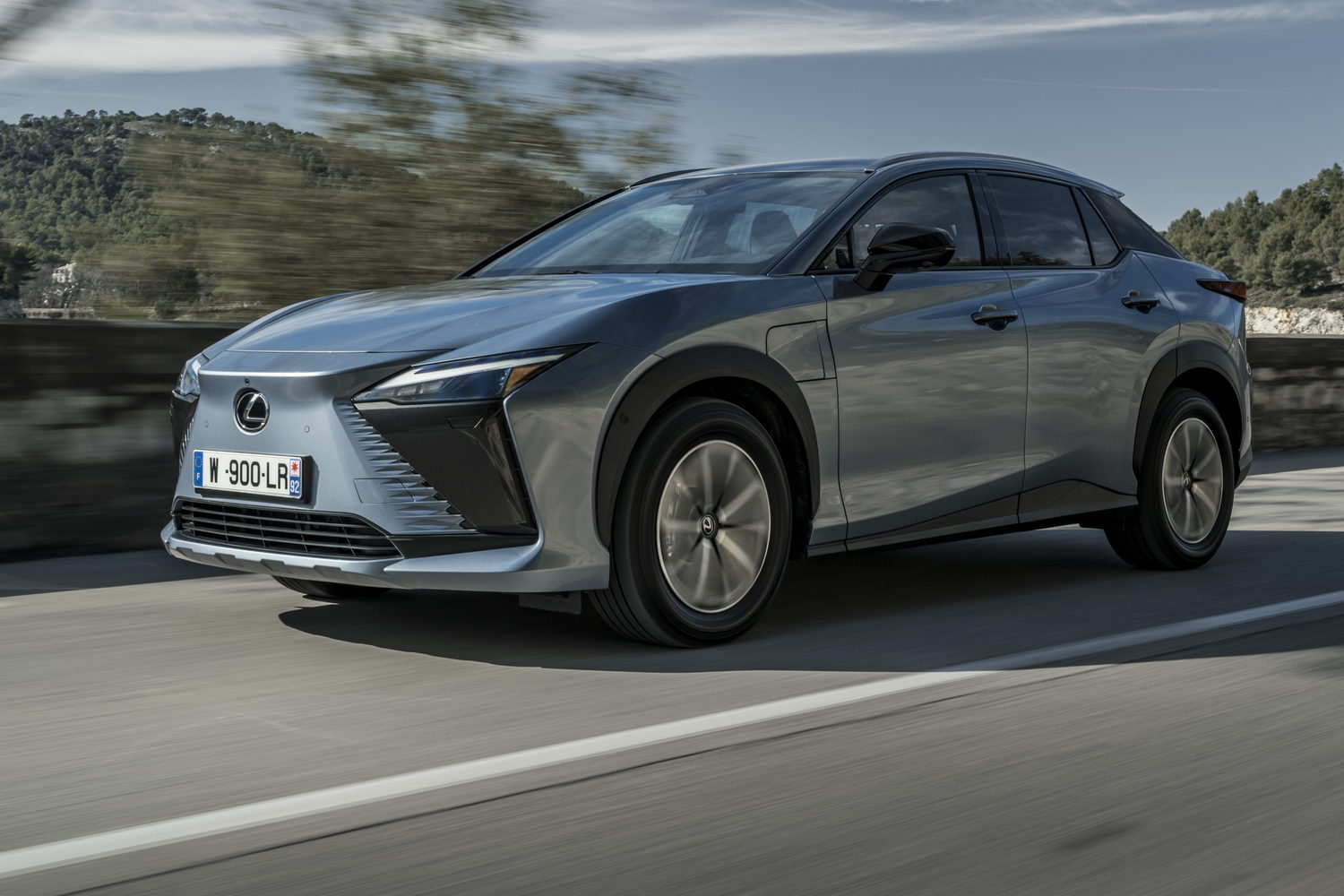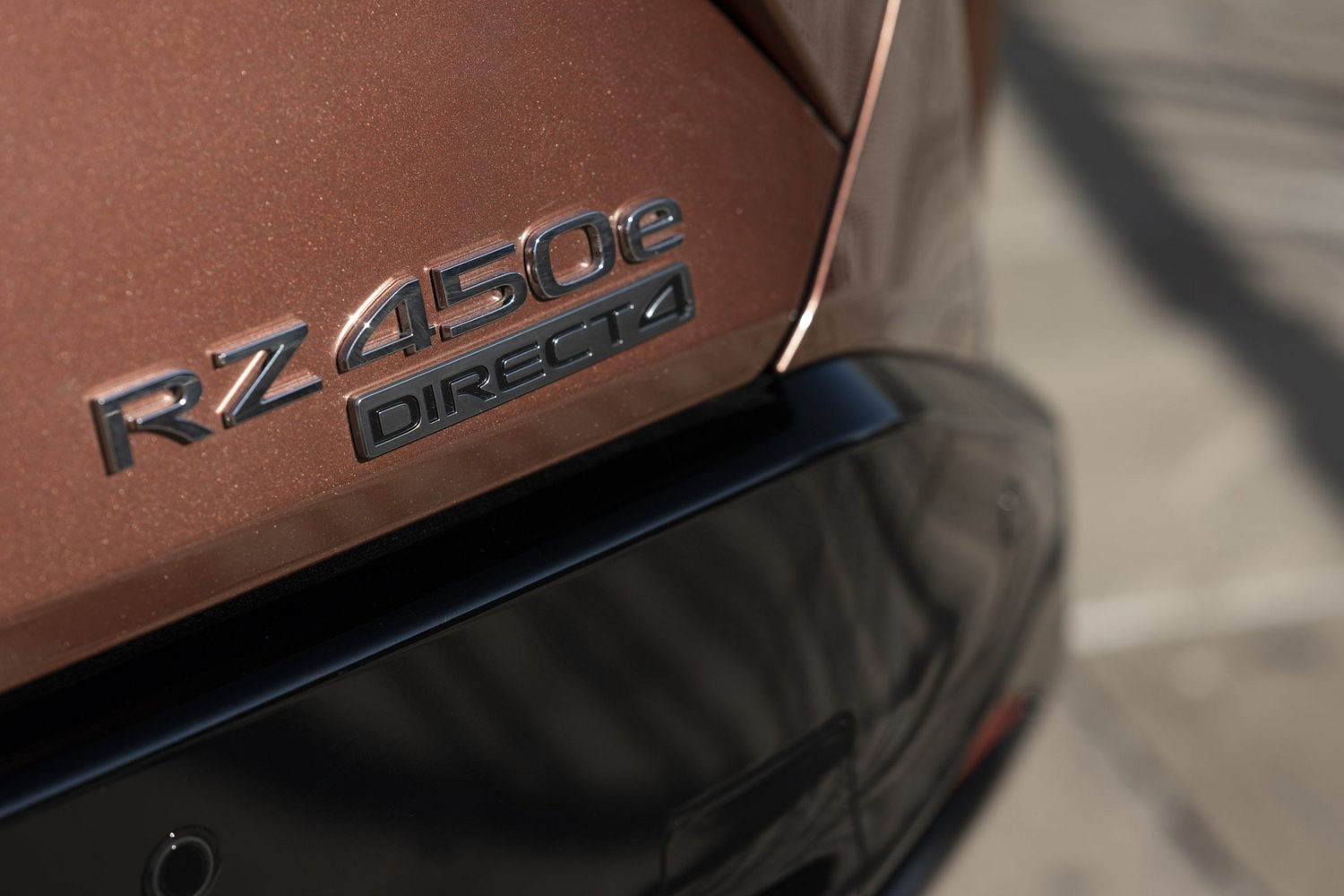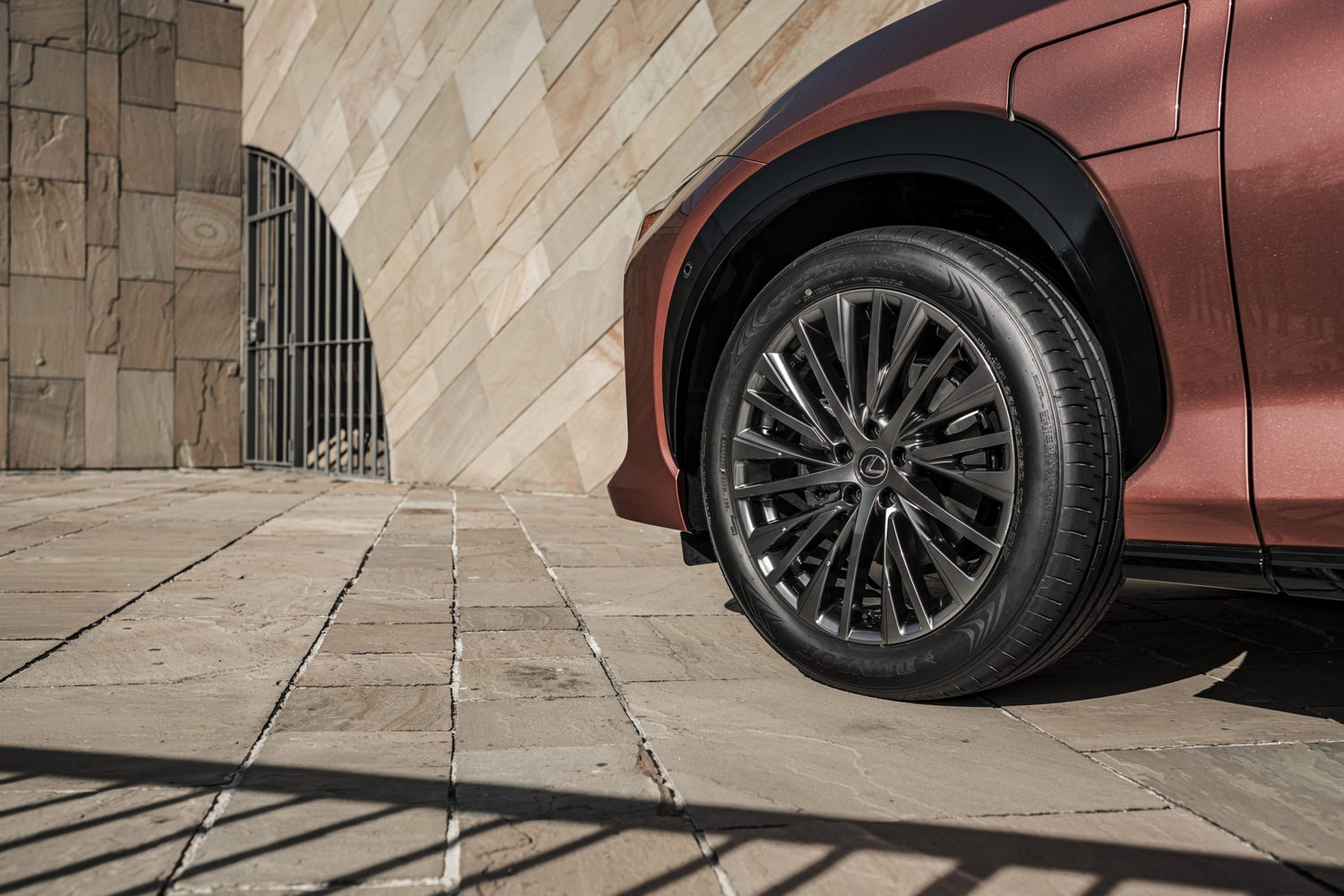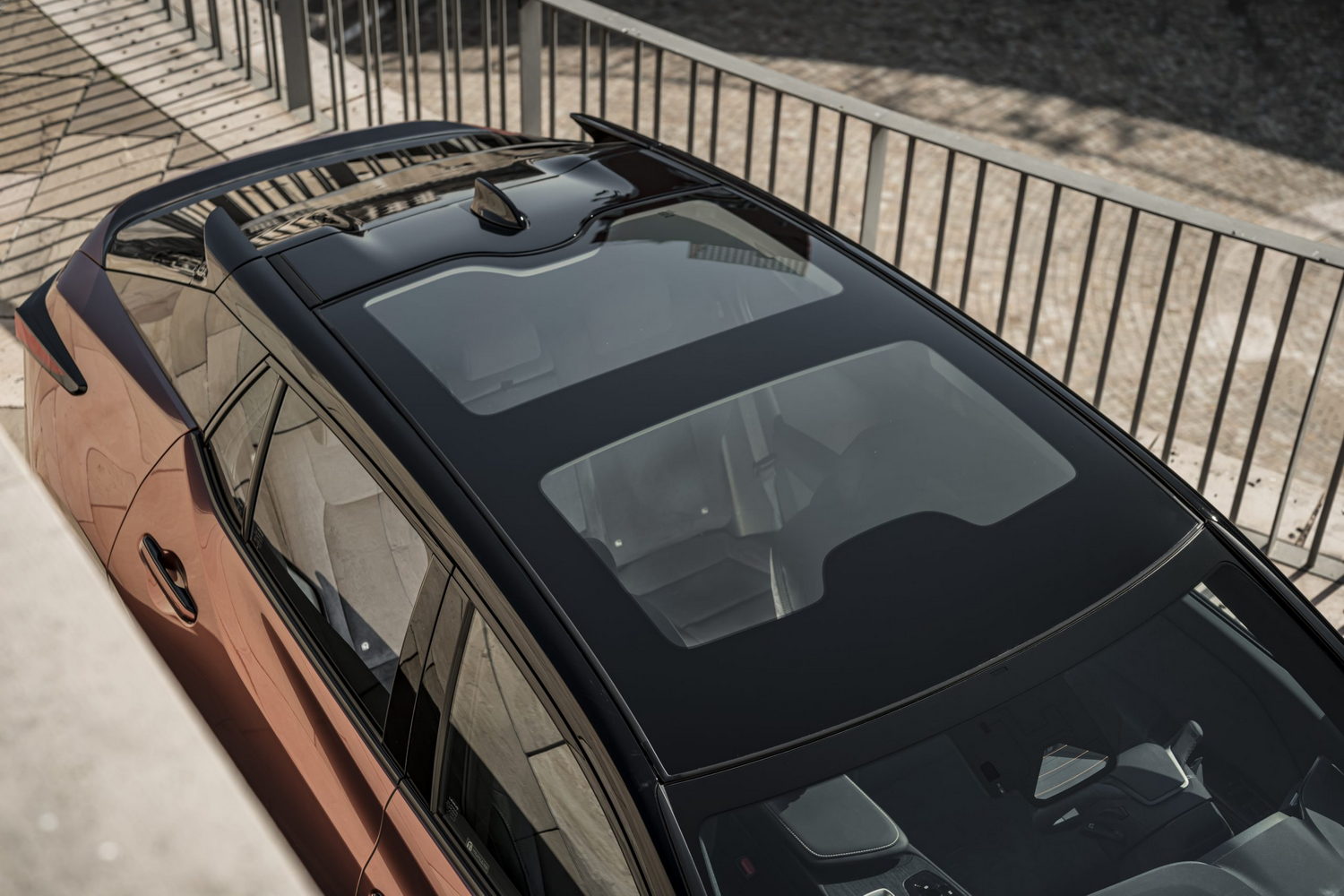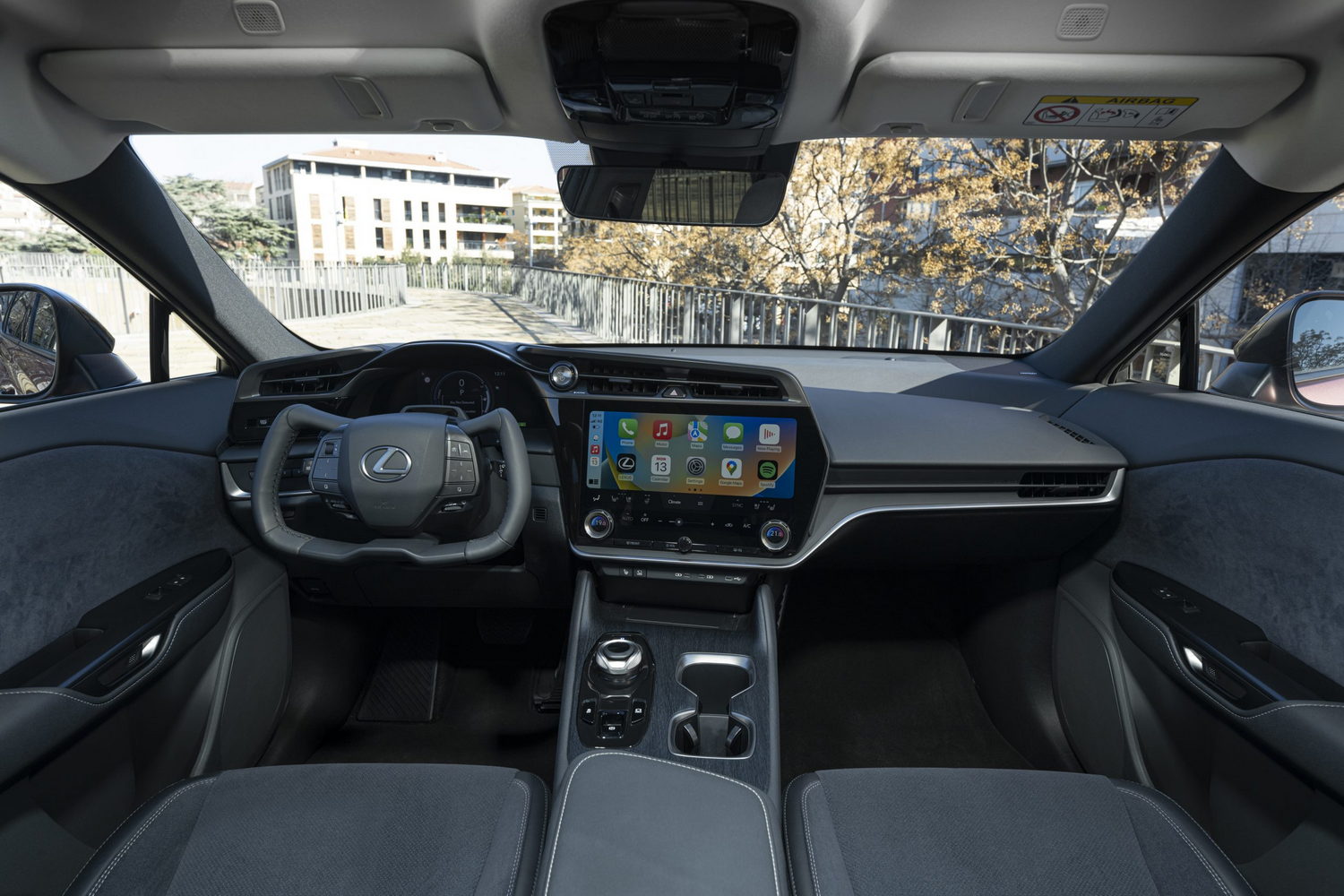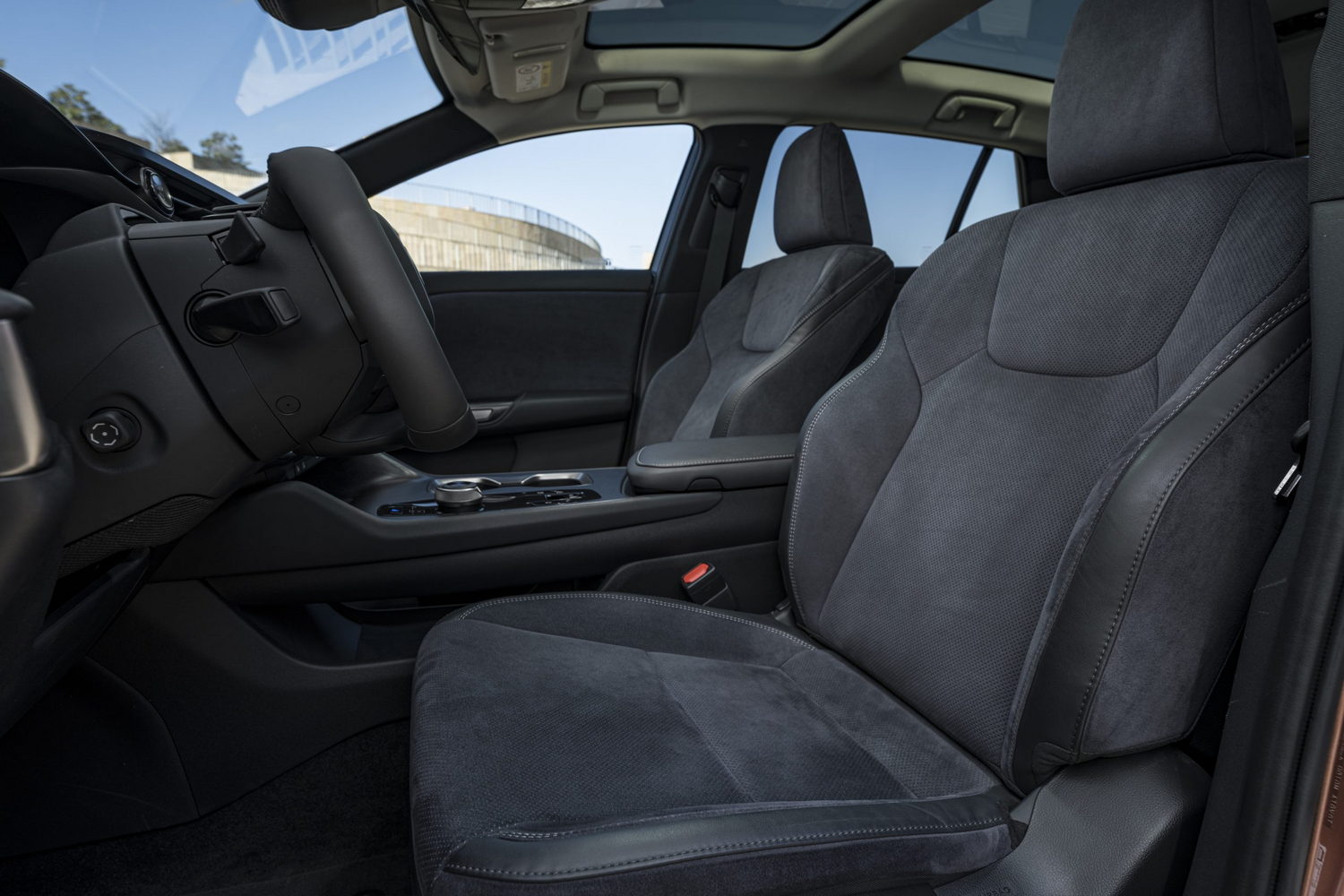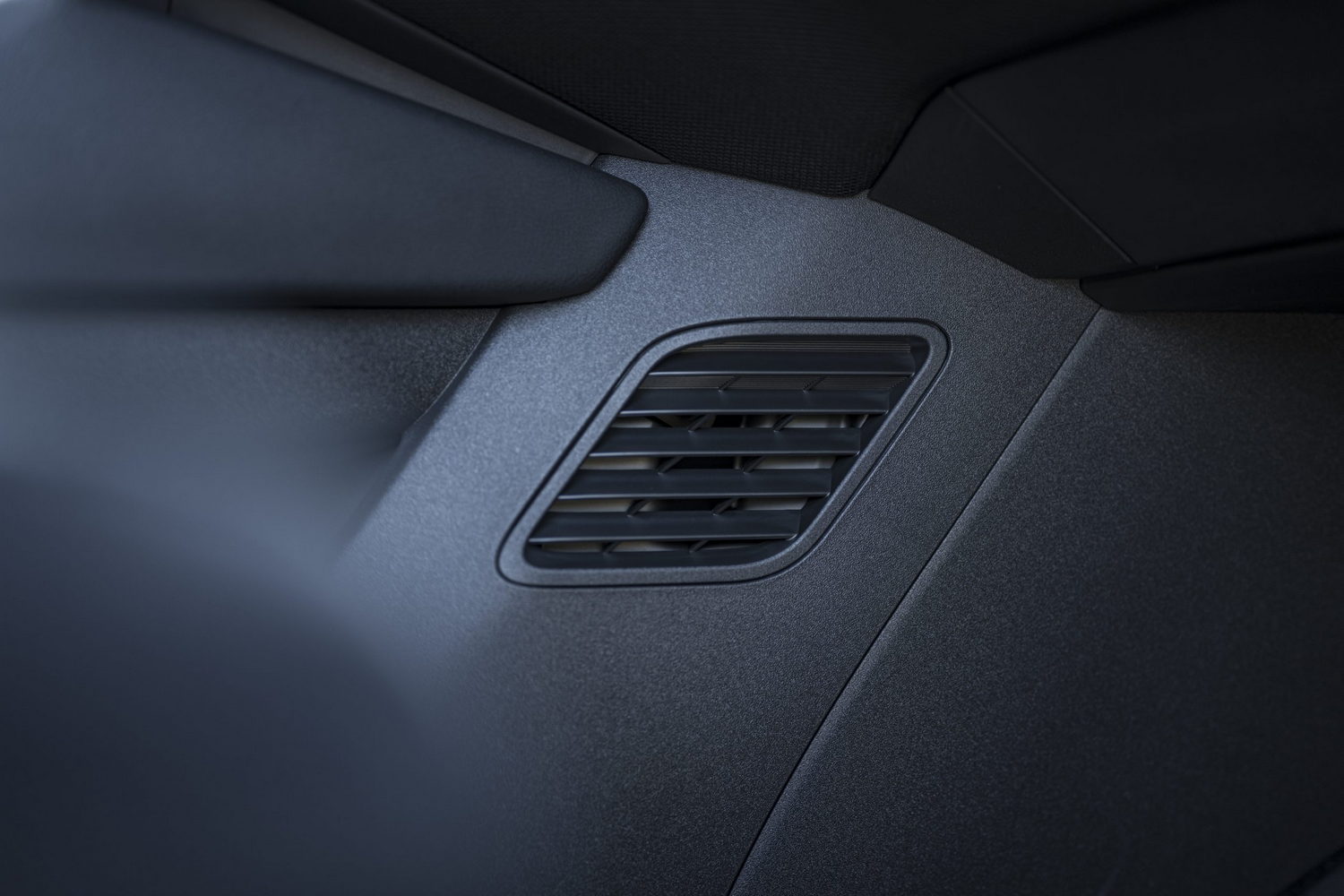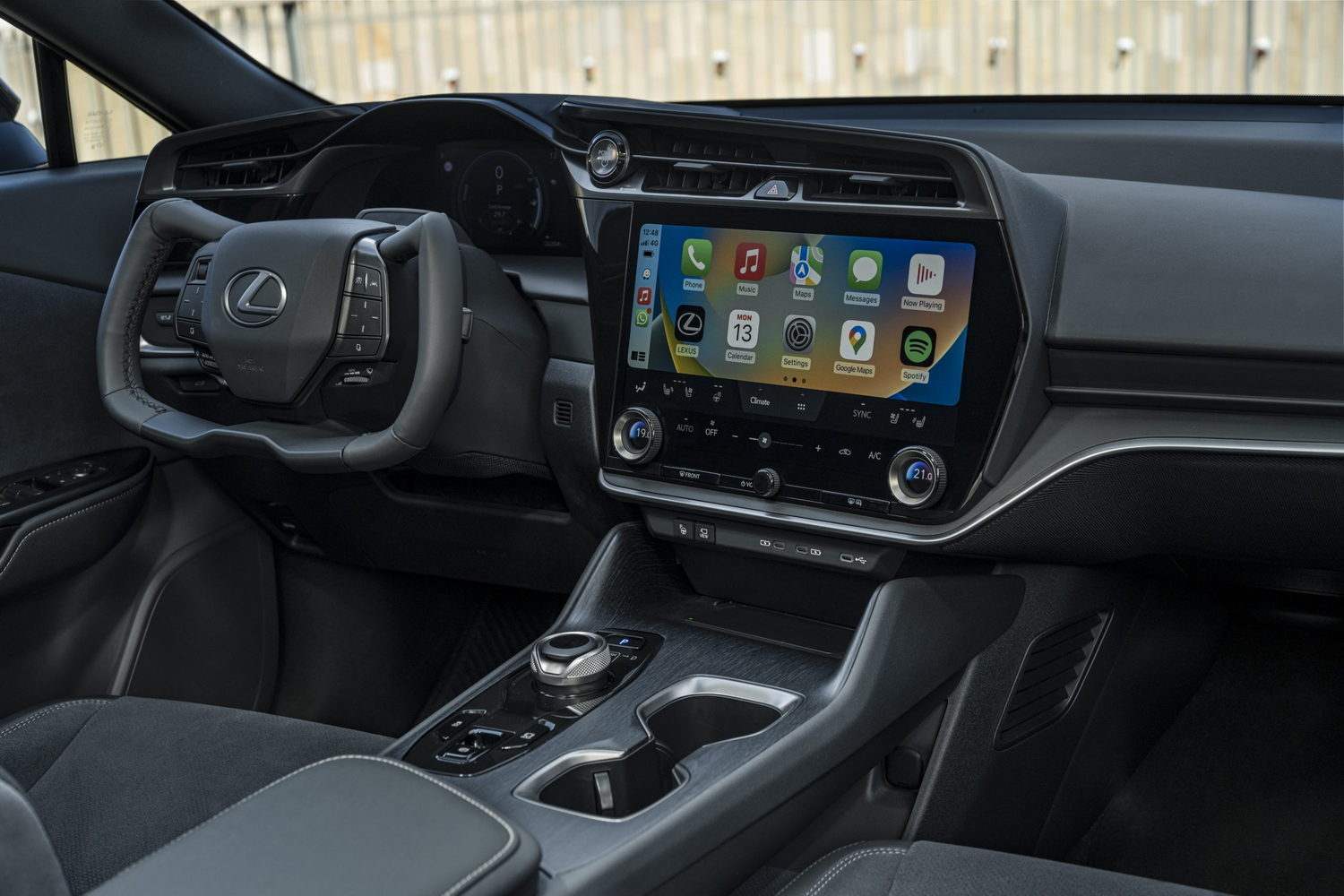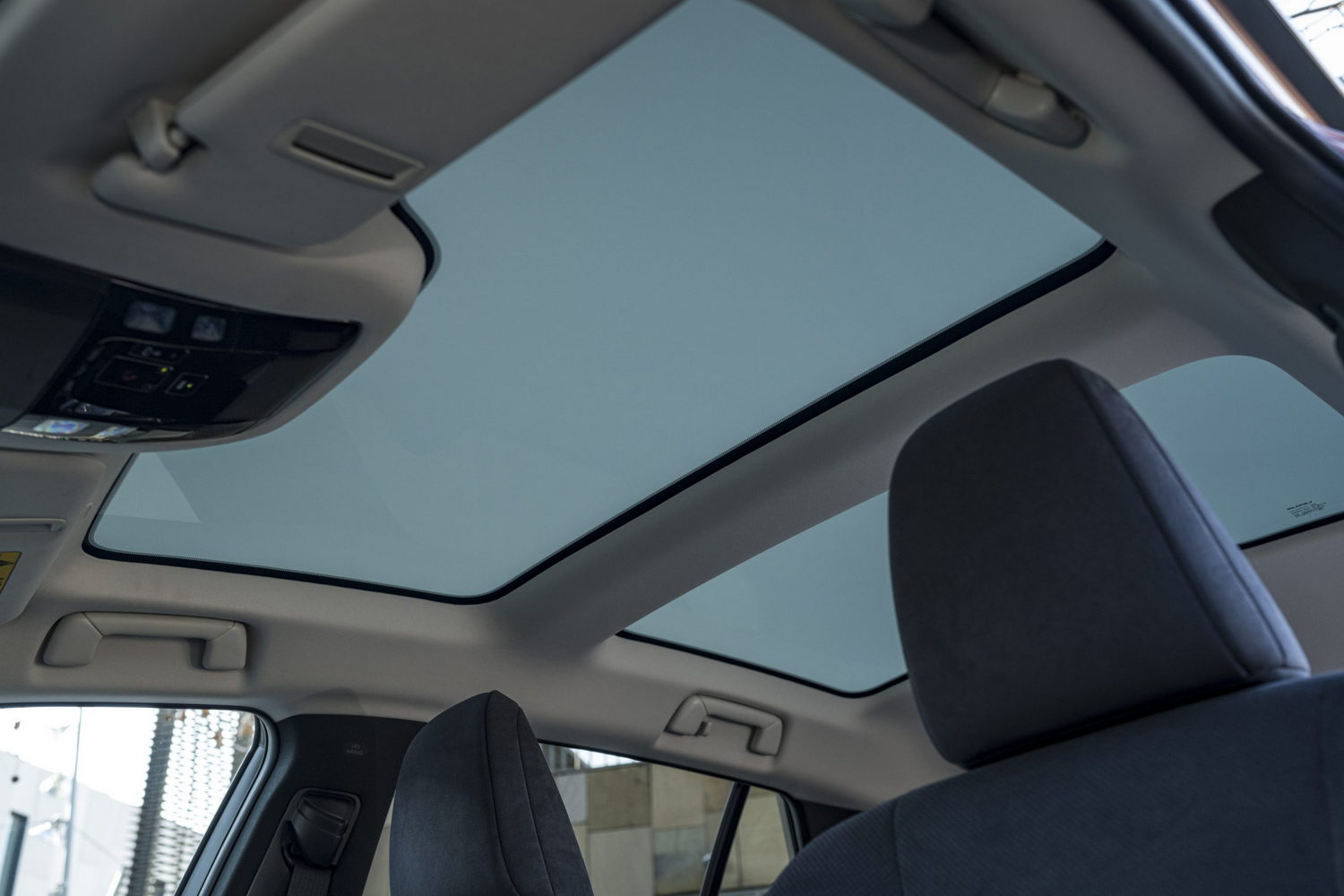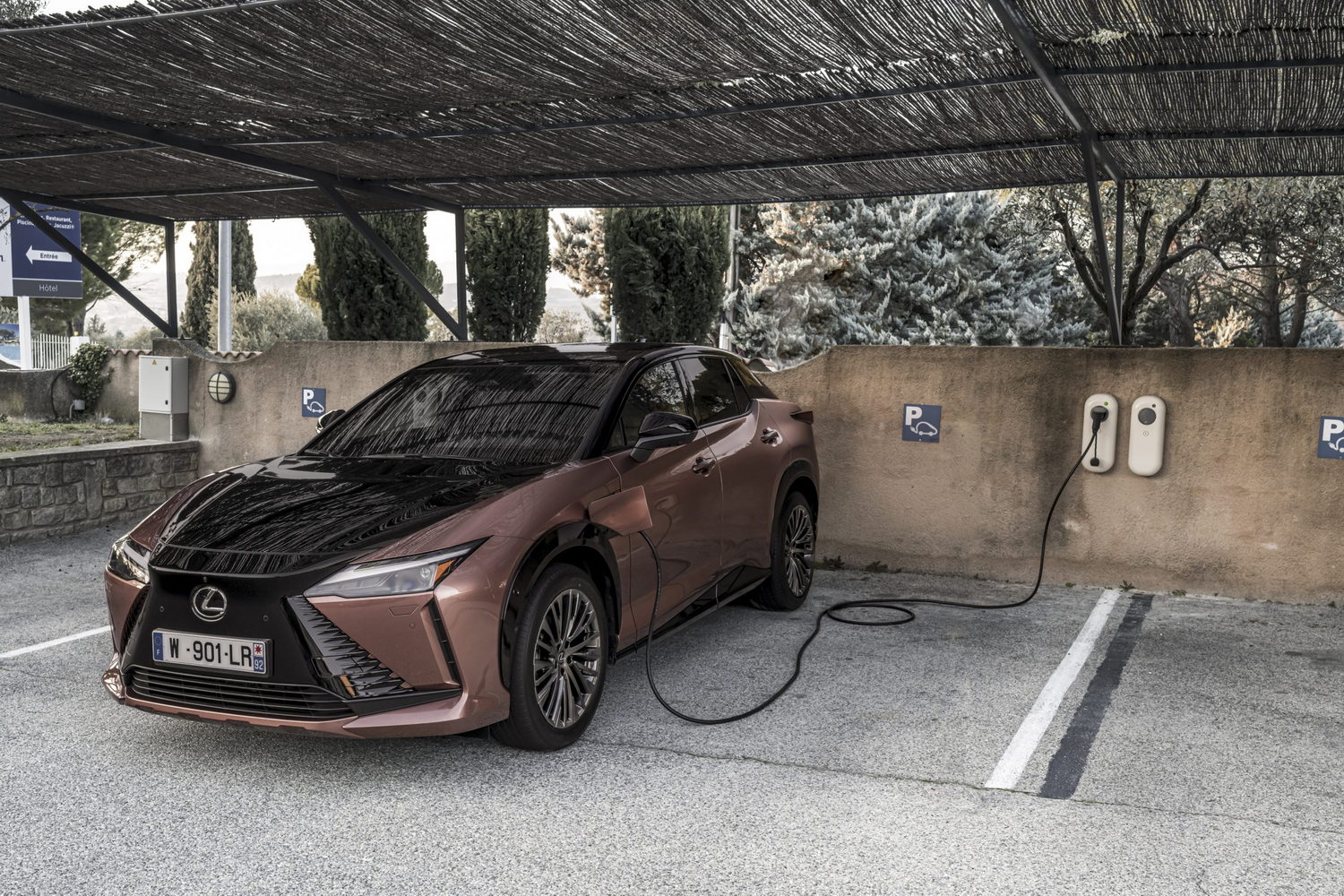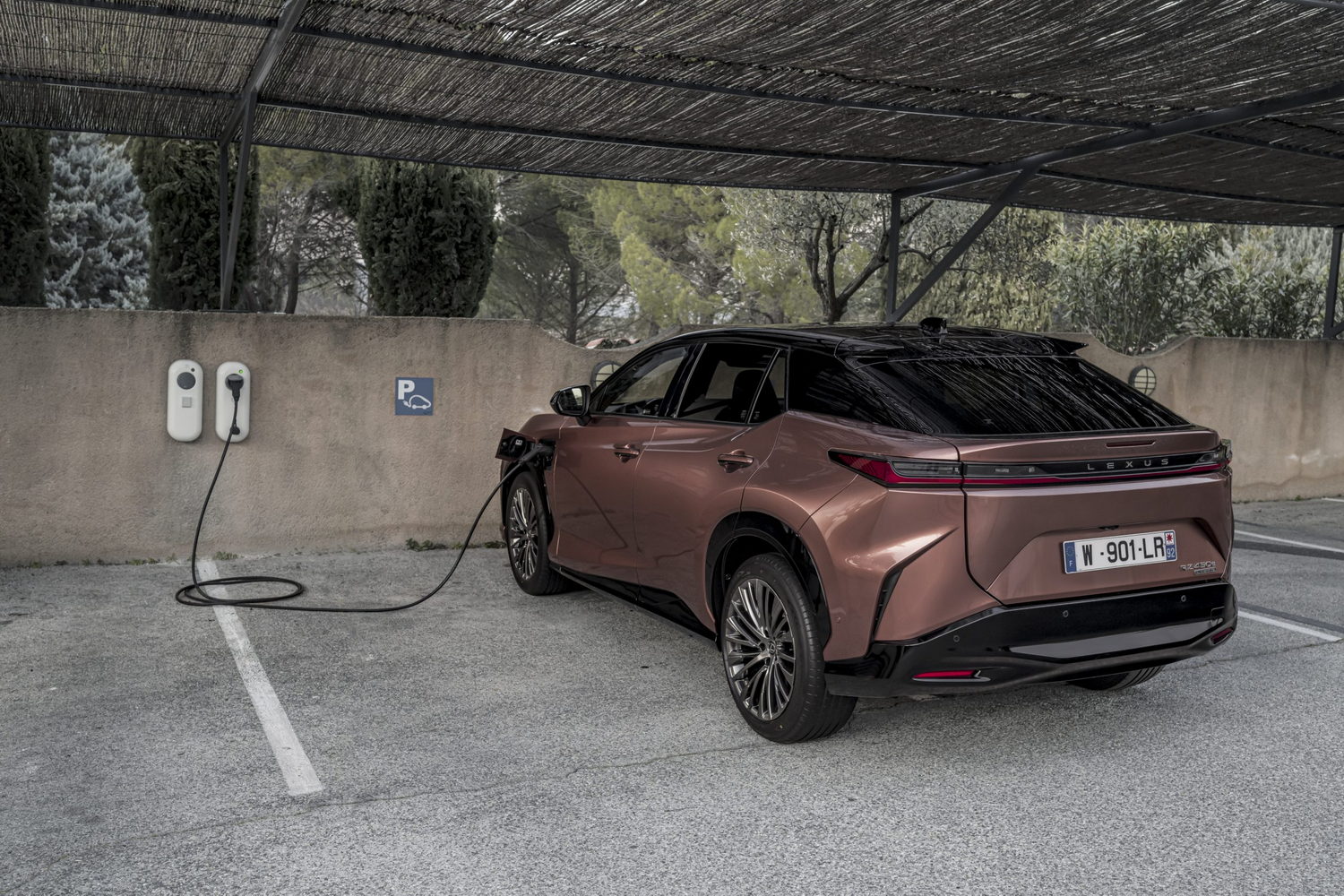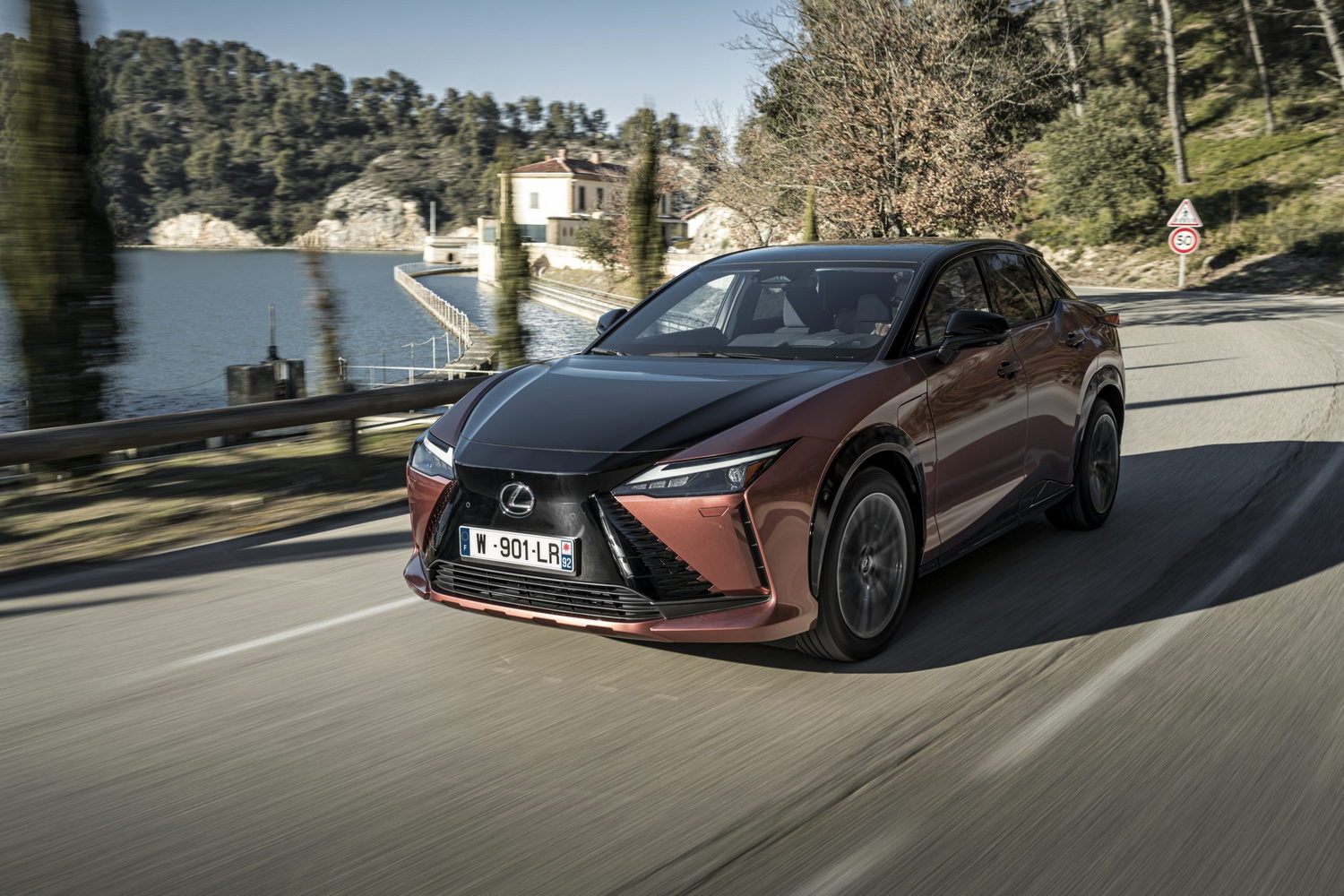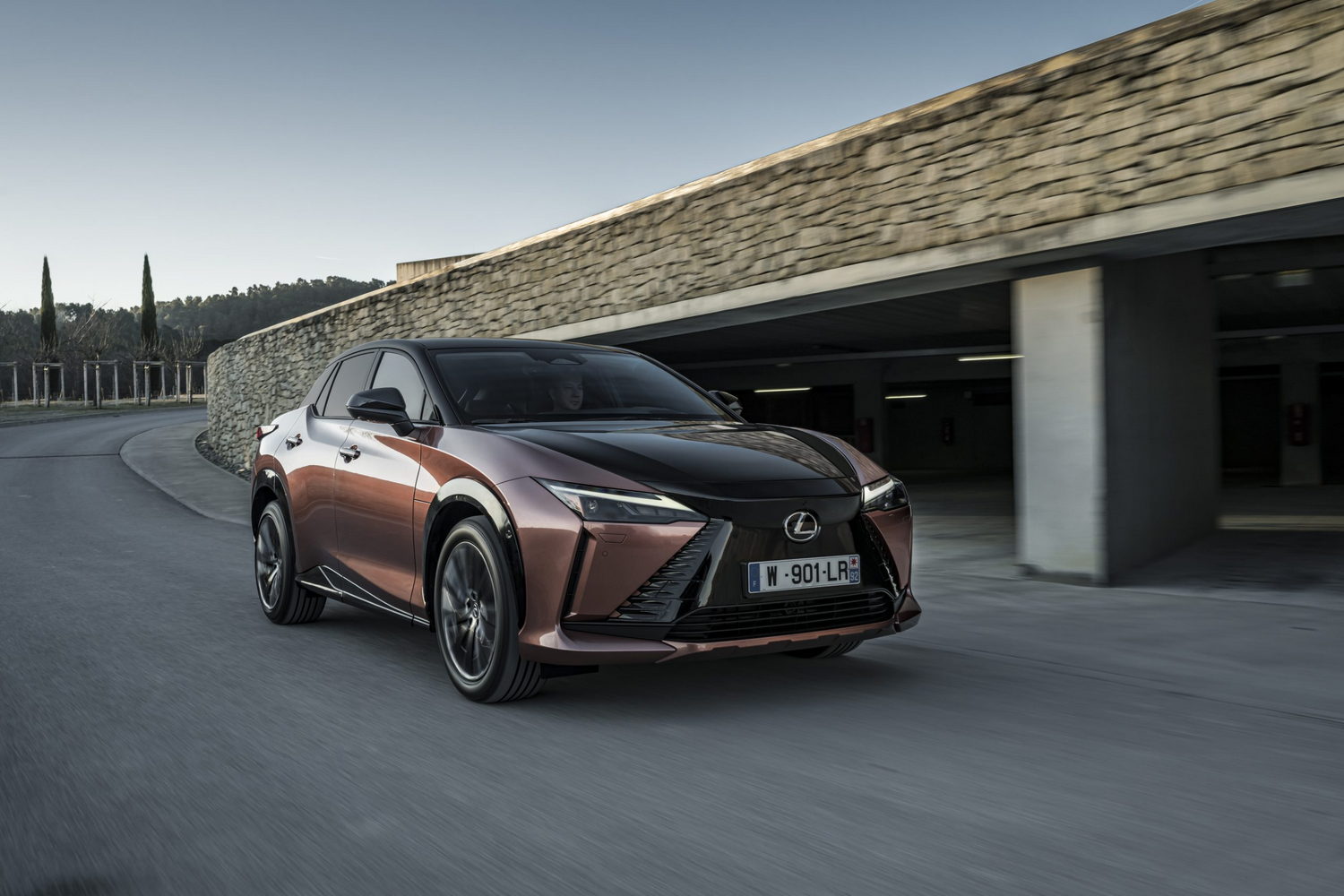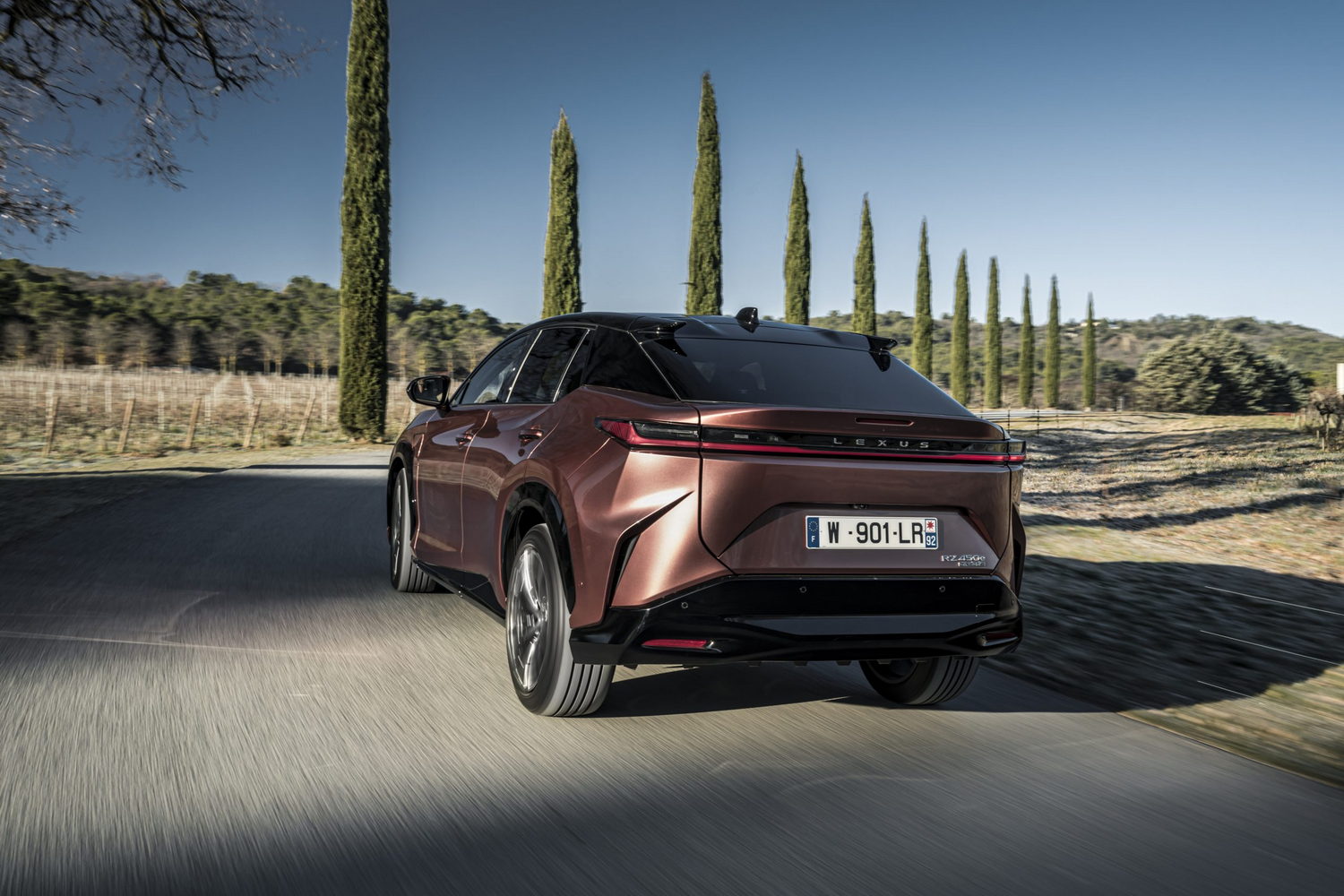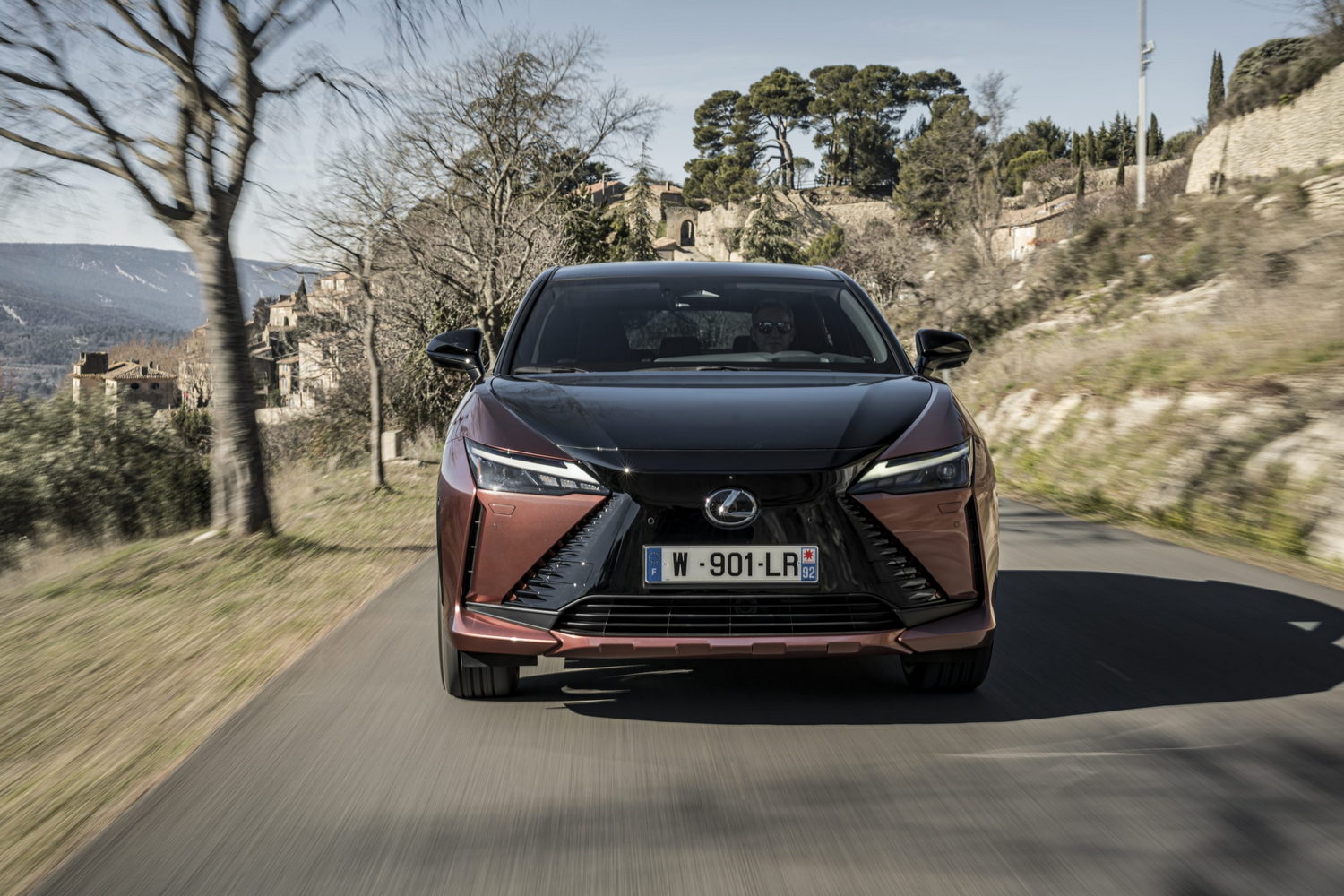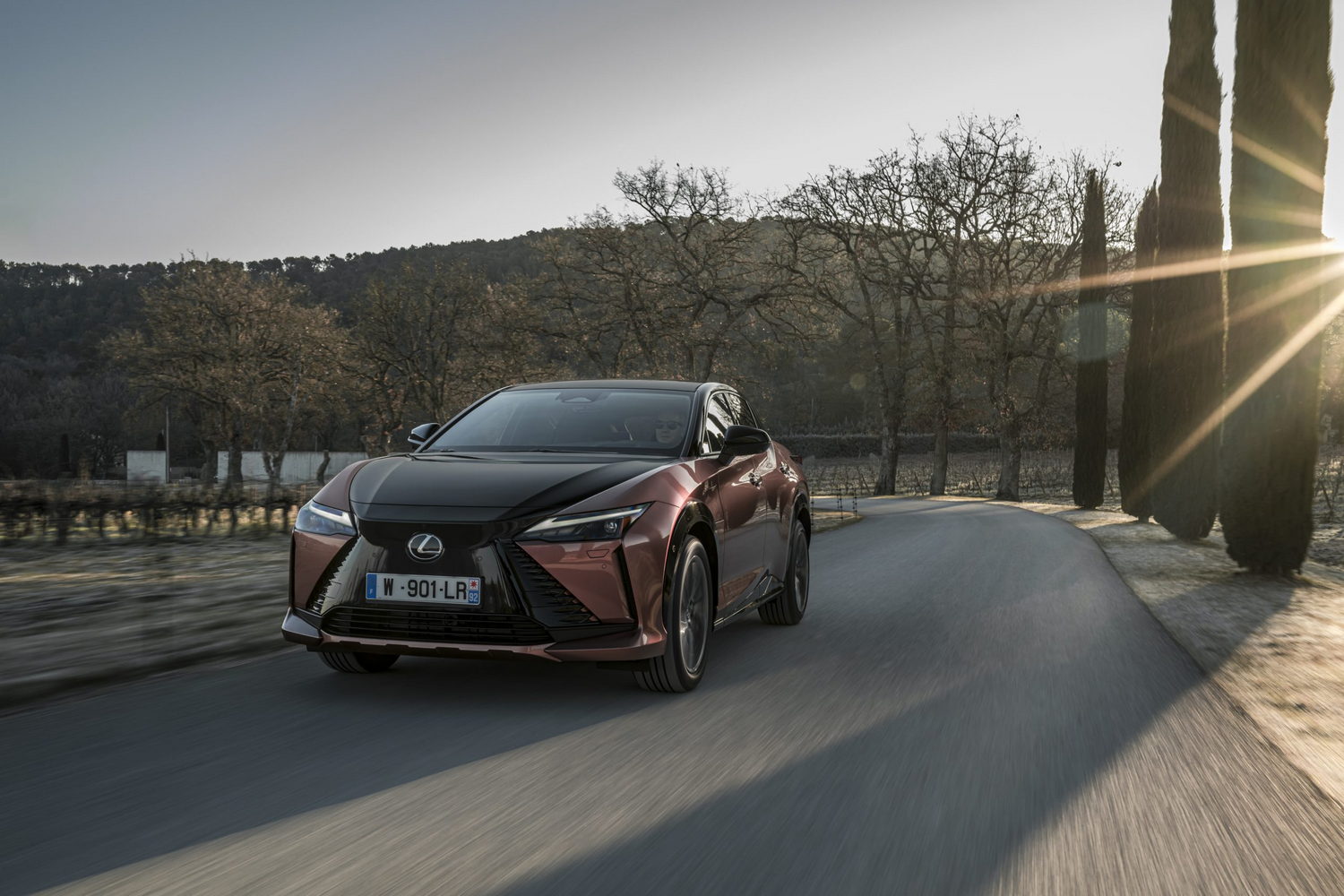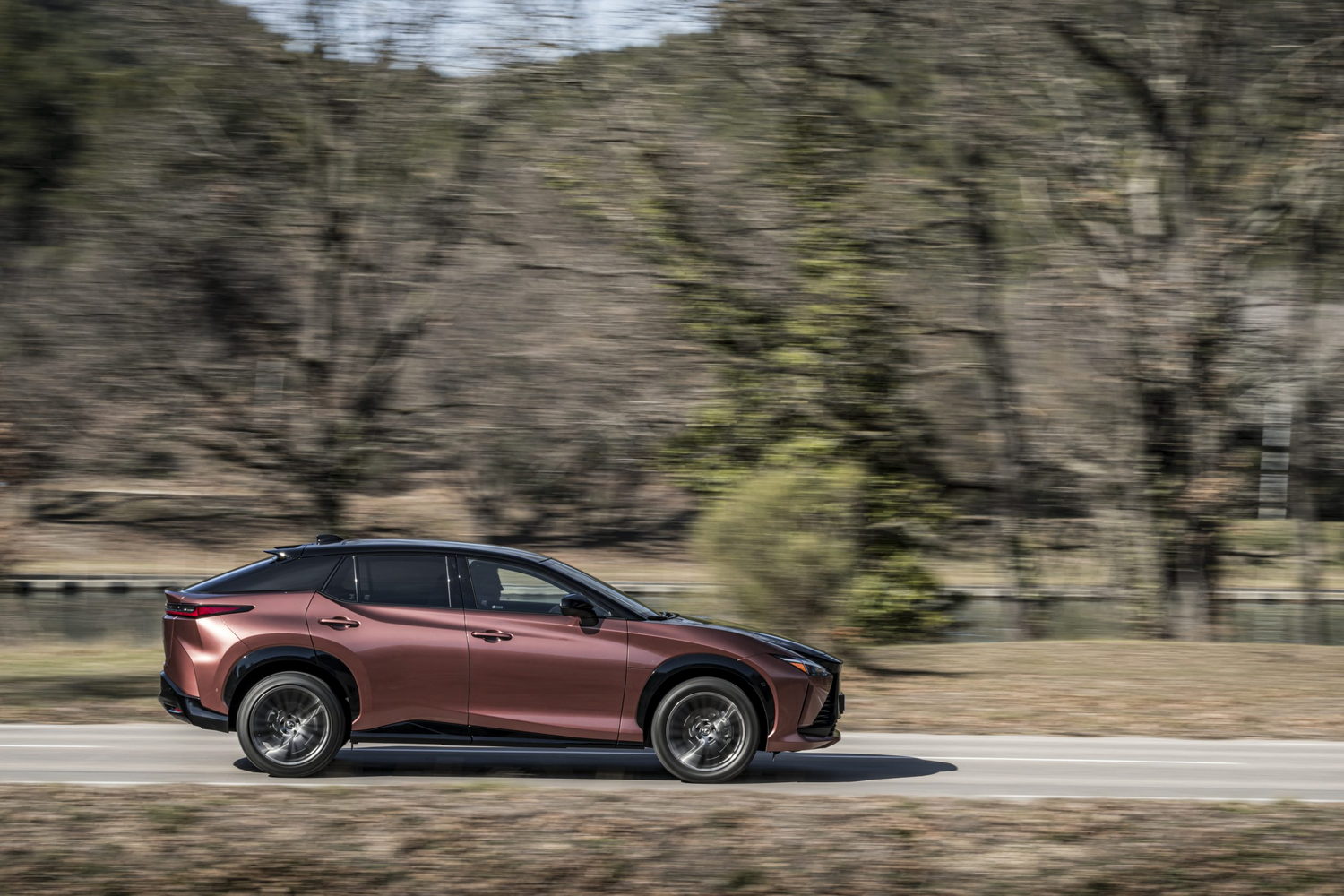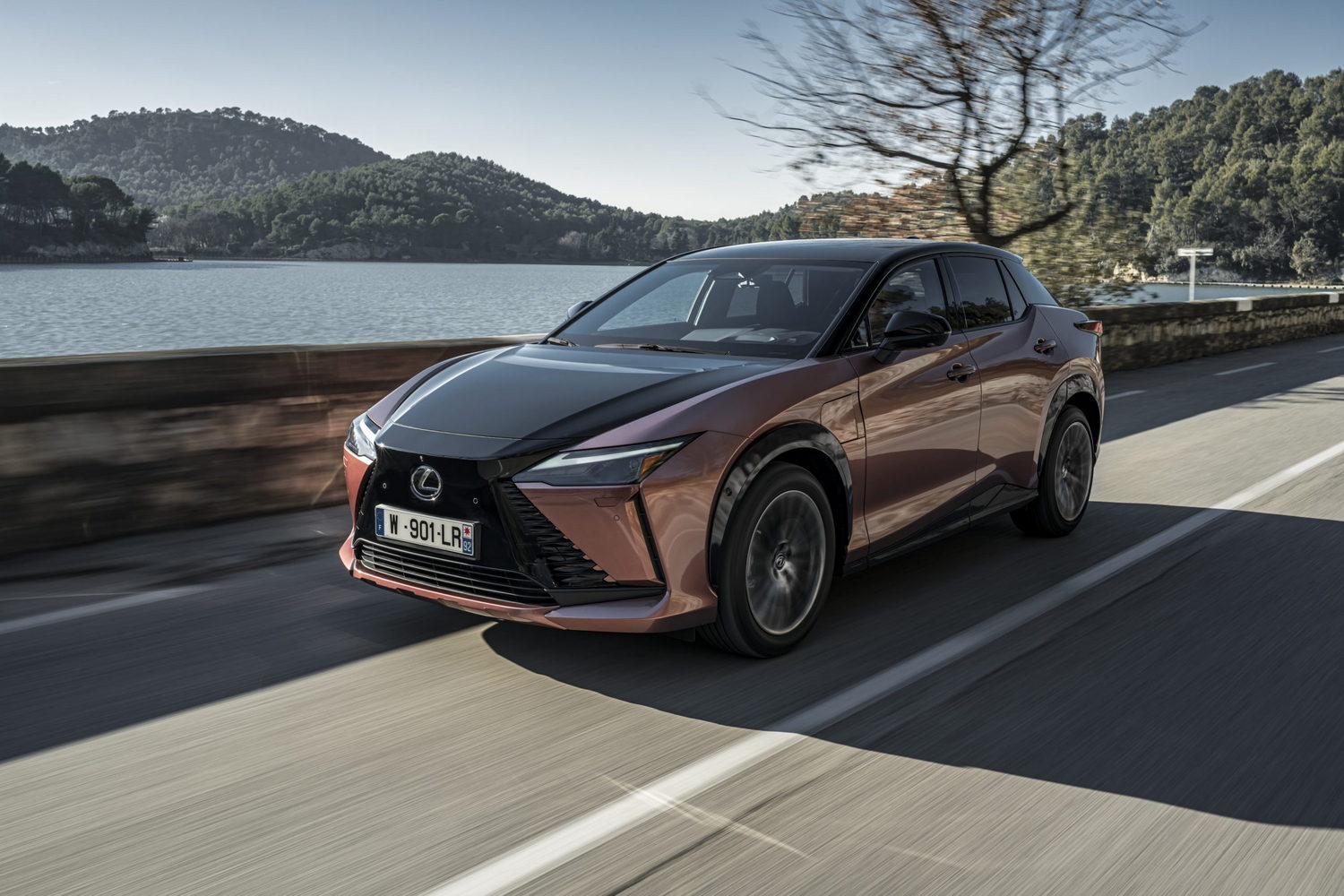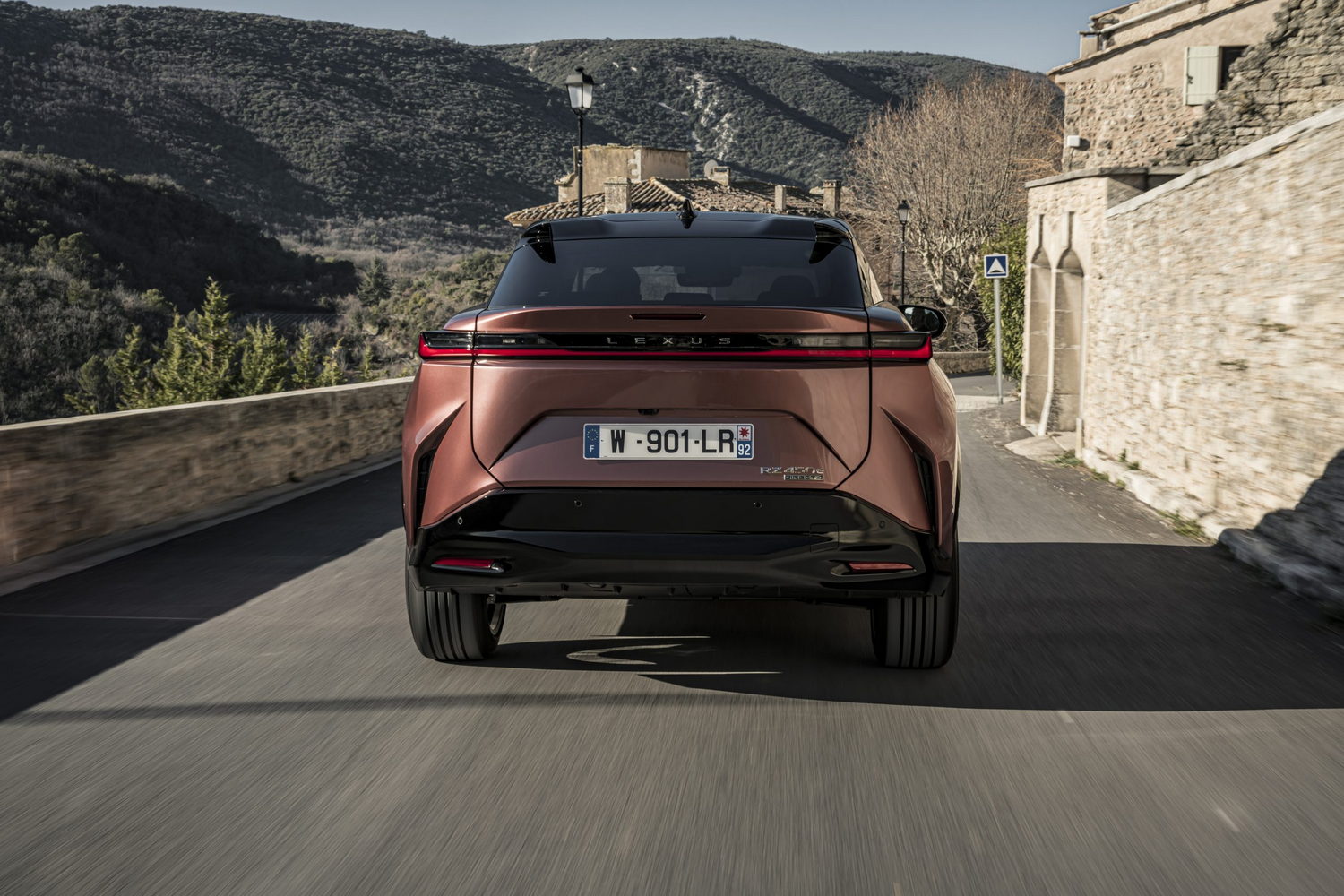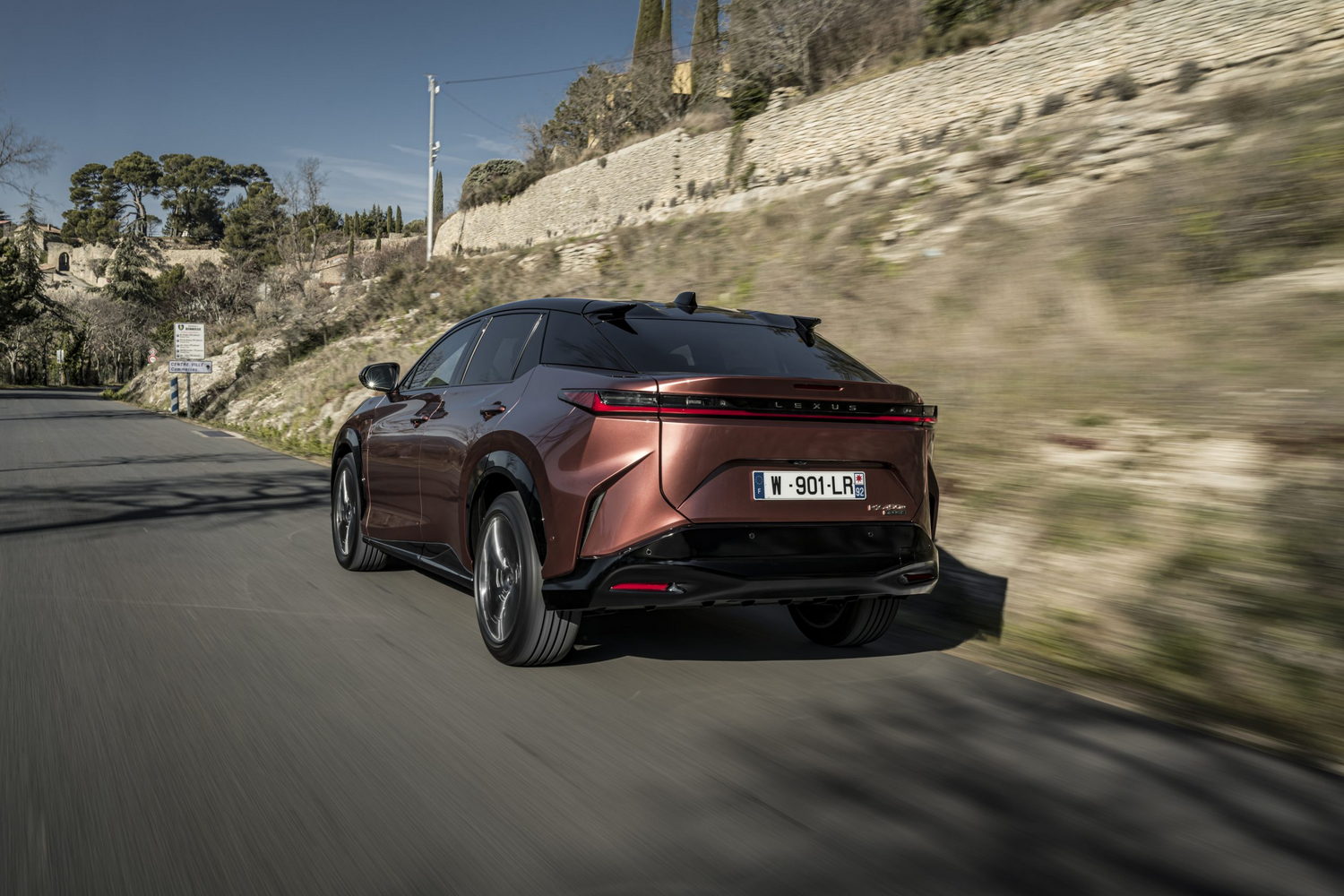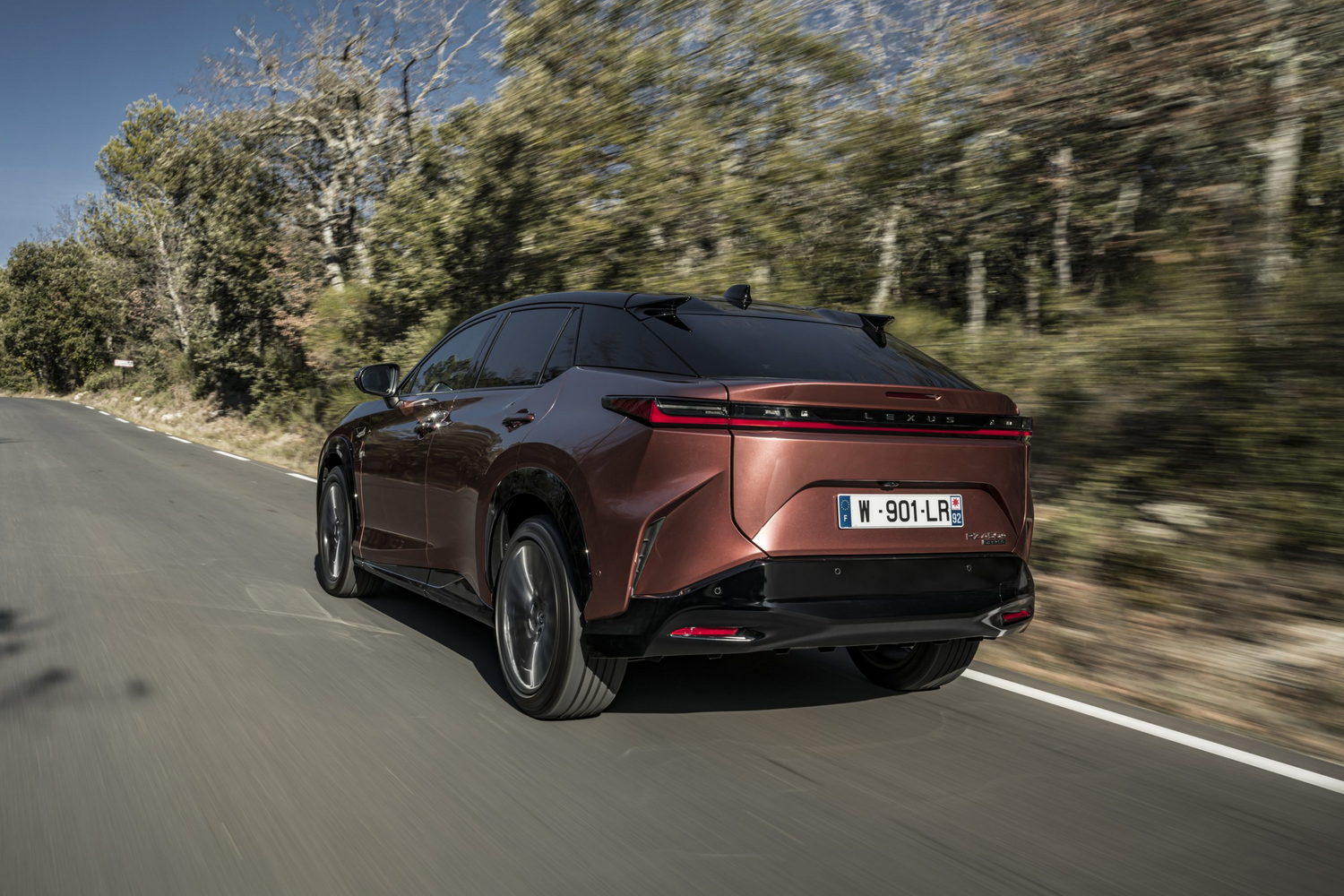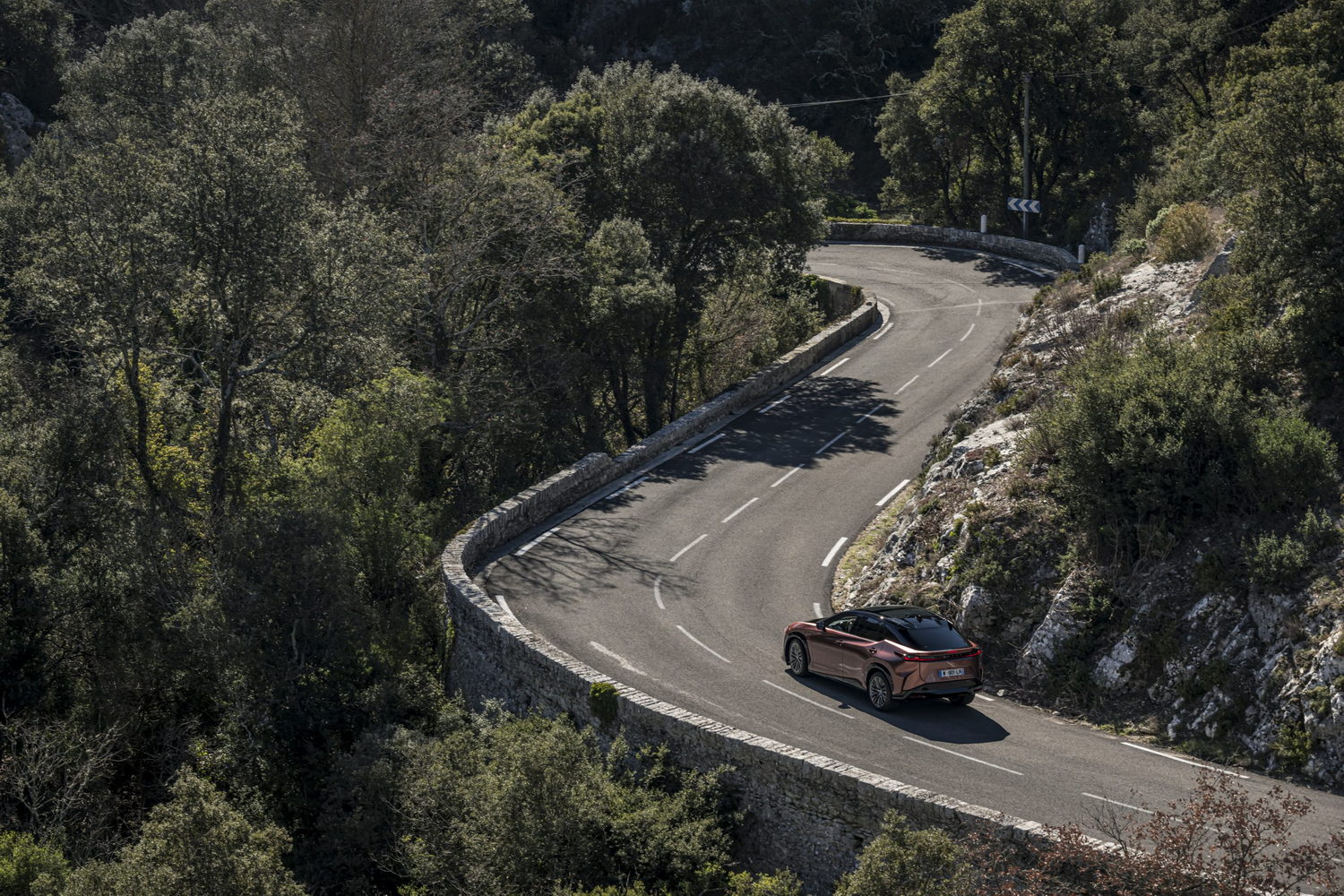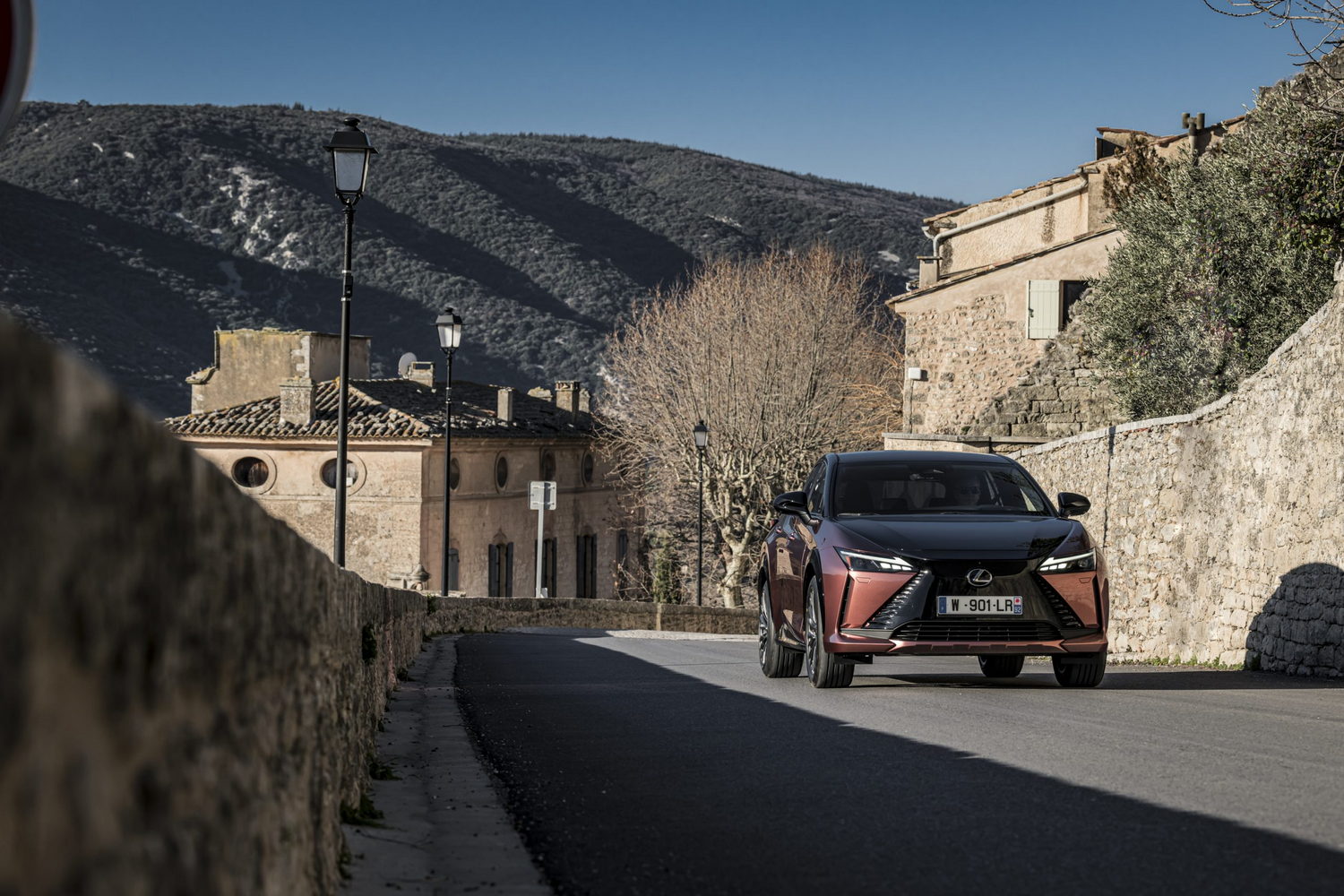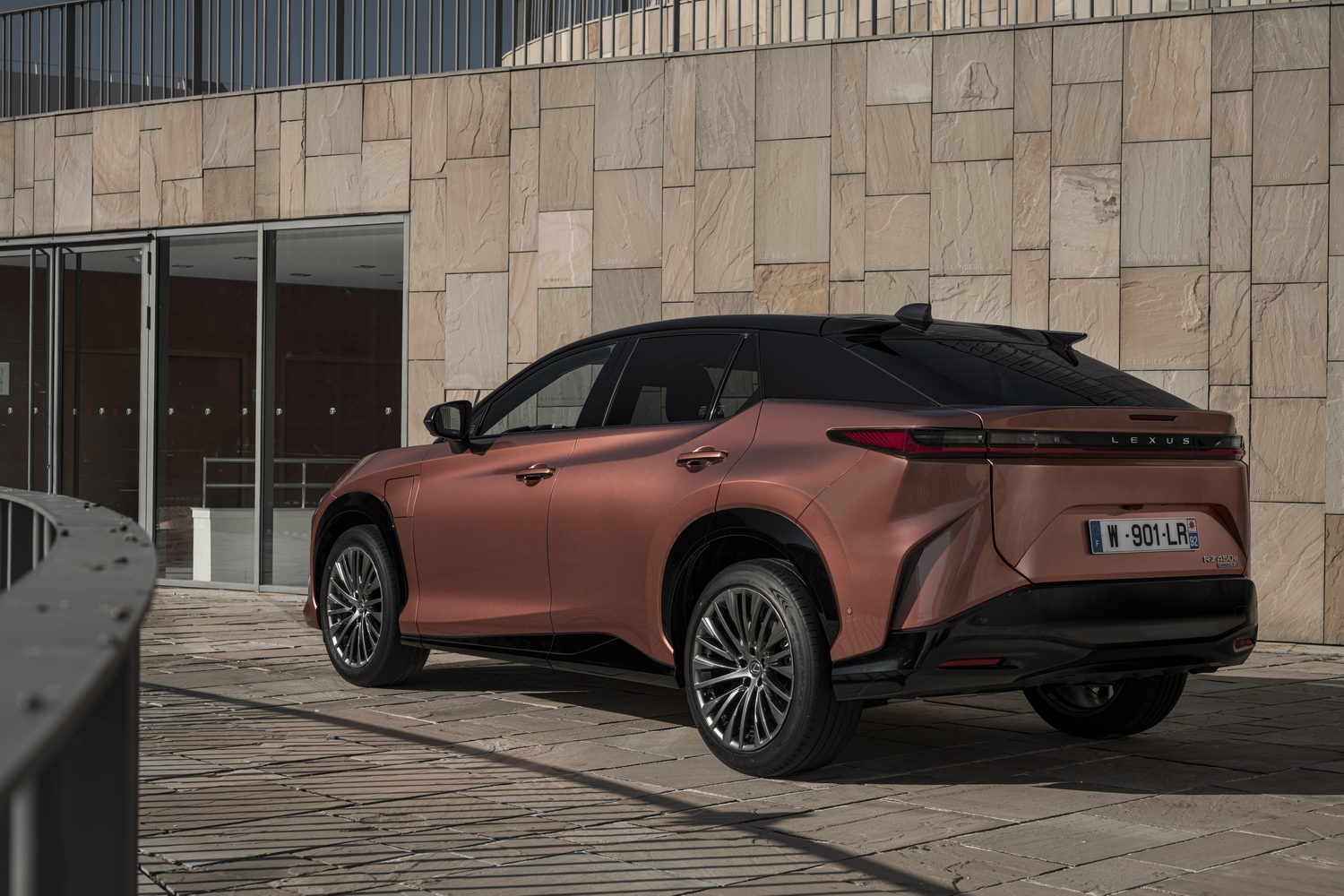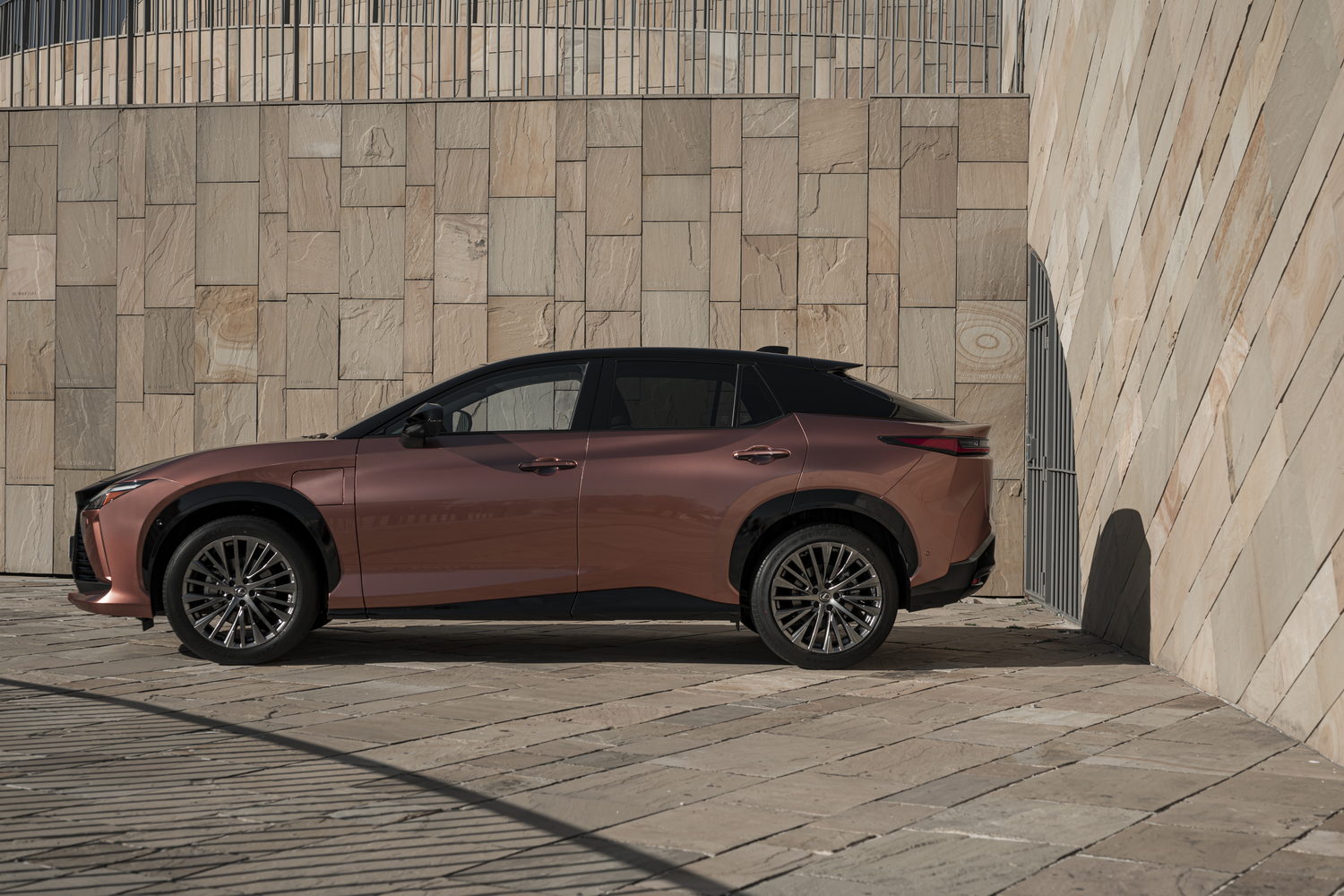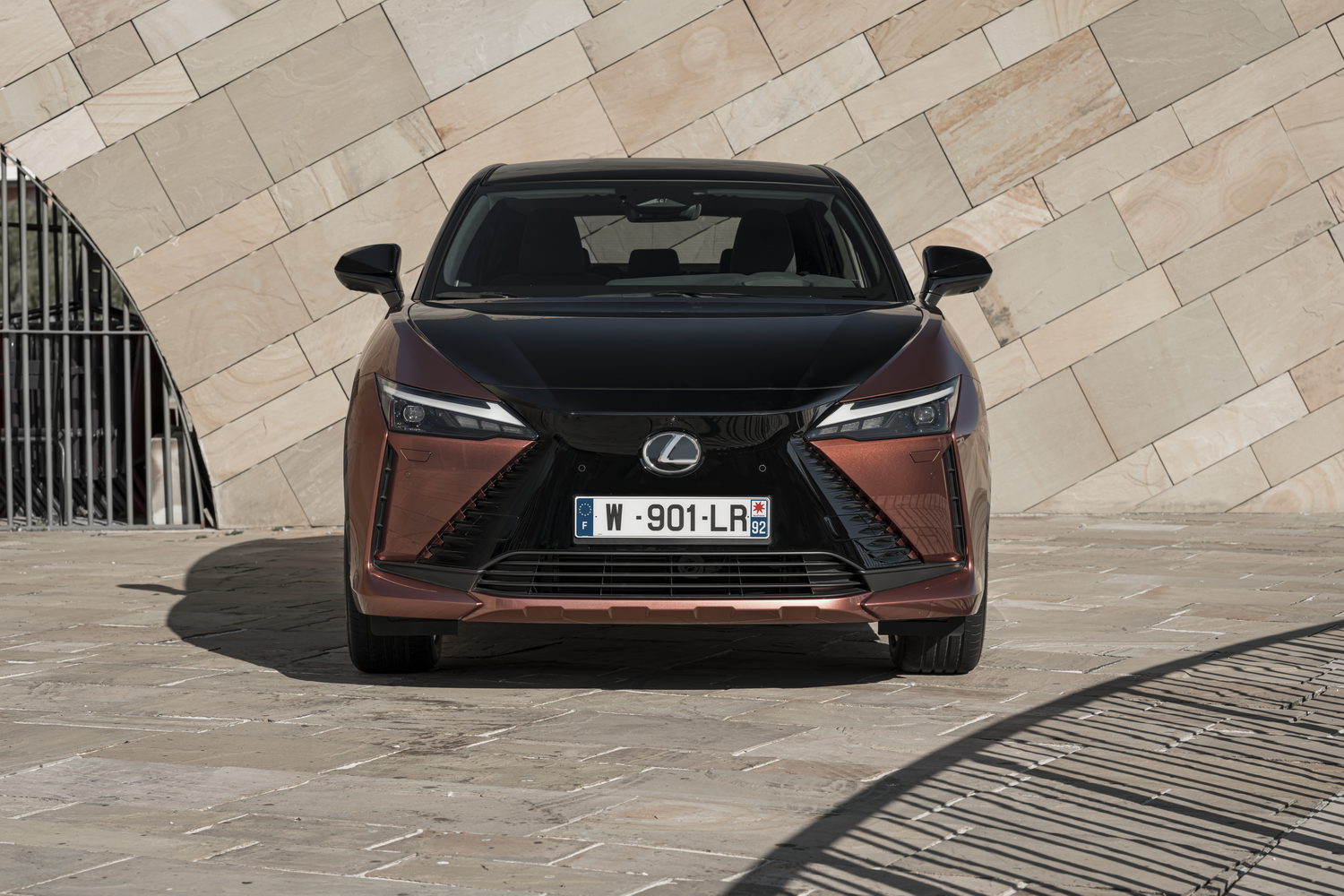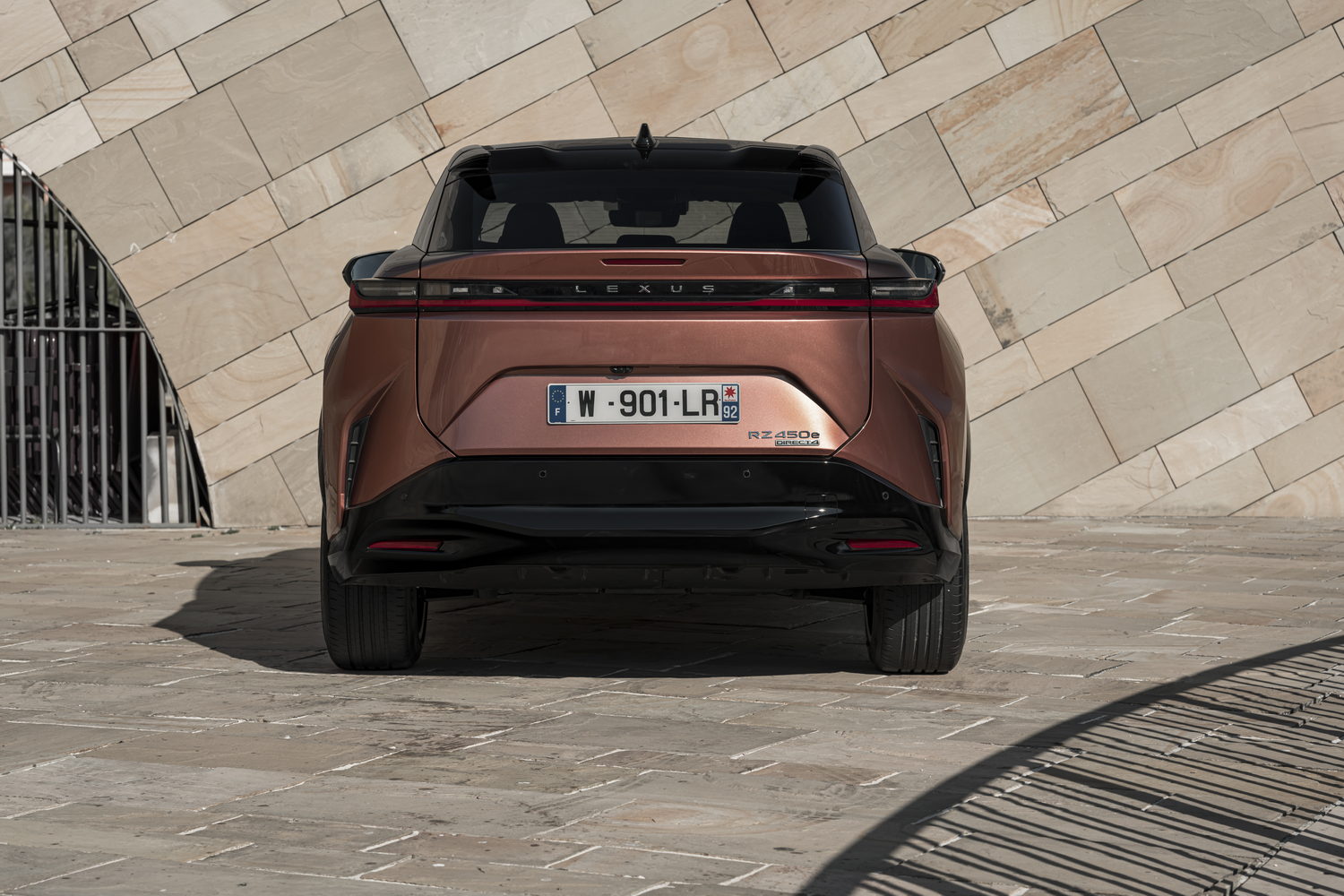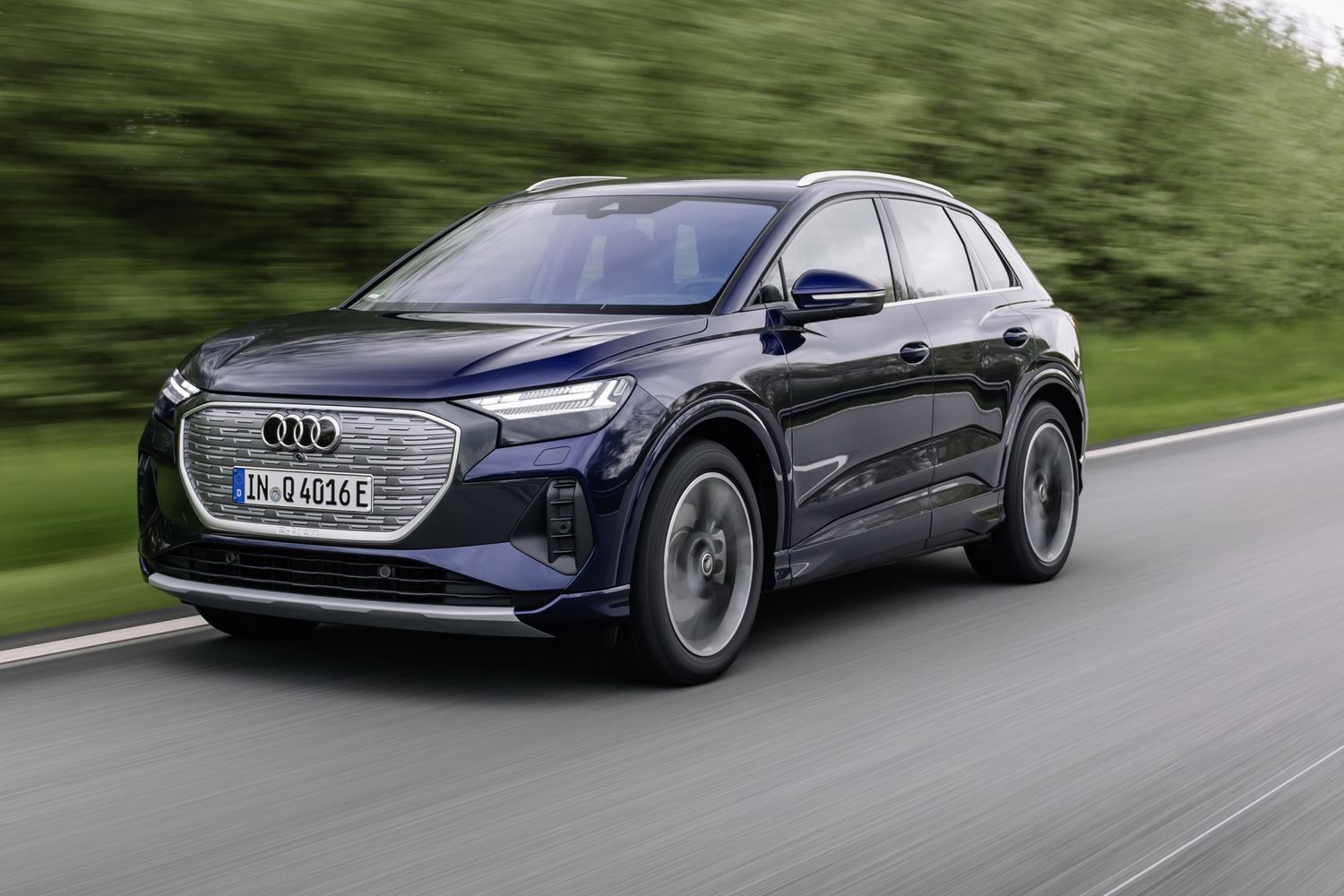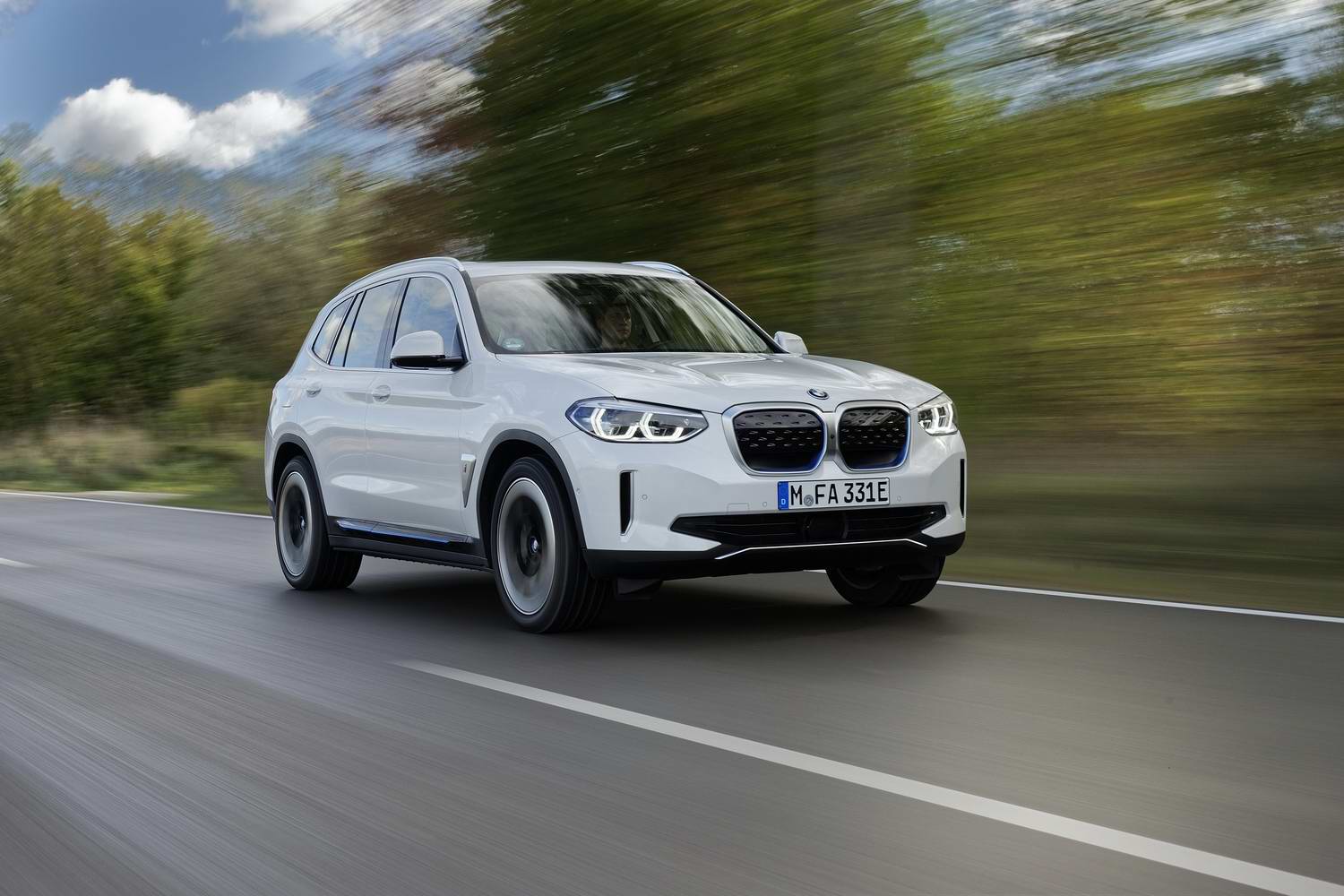Although the overwhelming majority of Lexus models sold in Ireland are hybrids, the company has been criticised for being a little slow to move to electric motoring. The RZ is only the brand's second all-electric model, after the much smaller UX, and it's a standalone product that sits between the NX and RX in the line-up. Under the skin, though, it shares much with parent company Toyota's bZ4X electric SUV, so will Lexus' more upmarket design and bespoke powertrain give the mid-size SUV more appeal than its sibling?
In the metal
Despite Lexus' best efforts, the RZ's close ties with sister brand Toyota's bZ4X electric SUV are immediately obvious in the car's design. Although the Lexus is a little longer, it has a similar silhouette with the rakish fastback rear end and the sharp nose. As with the larger Lexus RX, the RZ has done away with Lexus' spindle grille, although the bumper design still hints at the same double-trapezoid shape.
Overall, the RZ is unmistakably a Lexus. The basic aesthetic is clean, but there are some sharp, origami-style creases that add a bit of visual interest. So while the RZ isn't necessarily the most attractive car on the market, it's a classy and stylish thing that won't look out of place in any company.
The interior design, however, is more remarkable. Lexus has given the RZ the same touchscreen infotainment system as the latest-generation NX and RX SUVs, so it's much more user-friendly than anything Lexus has produced previously. Admittedly, it isn't perfect - the quest for simplicity means some handy features such as the drive mode selector is hidden in a sub-menu - but there are far worse systems on the market. It looks great and the climate control system is well integrated, providing a mix of physical and virtual controls.
The touchscreen dominates a luxurious and stylish cabin with plenty of storage space, despite not having a glovebox. Instead, the lower dashboard of our high-end example was taken over by a kind of radiator that's designed to feel like a "warm blanket" over your knees. We aren't sure that's an accurate description, but the panel certainly gives off plenty of heat.
Glovebox aside, there's plenty of space, with acres of rear legroom and ample headroom despite the sloping rear end. Normally, cars such as this might feel a bit cramped in the back, but even very tall rear-seat passengers will be perfectly comfortable on journeys of any length. And there's plenty of room for their luggage, with a 522-litre luggage bay behind the second row of seats. Yes, there's a little more room in a Volkswagen ID.5 and the shape is arguably less useful than that of the BMW iX3's boot, but it's still roomy enough for most occasions. And if you need even more, you can fold the back seats down to free up a 1,451-litre load space.
Naturally, being a Lexus, the RZ's cabin feels beautifully made, with lots of high-quality materials and impeccable construction. Everything feels securely held in place. Except, unfortunately, the occupants. The seats are comfortable enough, but they really lack lateral support, and that means passengers get flung about a little when going around roundabouts.
But the distinguishing feature of our test car's cabin was undoubtedly the steering wheel, or lack of it. From 2025, Lexus is planning to offer 'One Motion Grip' fly-by-wire steering as an option, and that system does away with the conventional round steering wheel. Instead, you get an aeroplane-style yoke from which your hands need never move unless you're switching into reverse. Even the stubby indicators move with it, although that takes quite some acclimatisation. And although the yoke feels as premium as anything else in the cabin, there's something strangely awkward about being unable to move your hands from the classic quarter-to-three position.
Of course, you can have a conventional steering wheel if you want - and customers ordering before the end of 2024 will be stuck with one - but that's no hardship. We'll delve into the reasons why shortly...
Driving it
Although Lexus has gone to the bother to give its two-motor electric system a name - 450e - it is currently the only powertrain option on offer for RZ customers, and Lexus has told us there are no plans to add any more powerful or long-range versions.
So 450e it is, and that means you get a 71.4kWh lithium-ion battery and two electric motors - one on each axle. Together they produce up to 313hp and give the RZ all-wheel drive and allowing quick acceleration. It feels nippier than the bZ4X around town and punchier on the motorway.
Lexus is well aware the RZ's battery is smaller than that of some competitors, but the Japanese company says that's down to a desire to balance cost, charging and weight considerations. And while a maximum range of 438km (395km when fitted with the 20-inch alloys of our test car) might be roughly in line with other luxury all-wheel-drive SUVs of comparable size, the RZ's real-world range is somewhat less impressive going by our initial test drive. While Lexus says efficiency of up to 16.8kWh/100km is possible, we only achieved in the low-to-mid-20s. Admittedly, we were hardly hypermiling for maximum efficiency, but we weren't racing it either. We reckon you're looking at around 250-300km between trips to the charging point if you drive on the motorway.
And when you get there, the RZ will charge at up to 150kW, allowing it to get from empty to 80 per cent in half an hour. However, Lexus itself admits that this is subject to conditions, and has been calculated at an 'ideal' 20 degrees Celsius. When the temperature drops below 10 degrees, the brand's engineers estimate that time could almost double.
It's still quicker than charging at home, though. Using a 7kW domestic 'wallbox' charger, Lexus says recharging the battery will take around 10 hours, but if you're lucky enough to have a commercial-style three-phase electrical supply, the car will charge at up to 11kW on AC. If you can do that, you slash the charging time to six-and-a-half hours.
In better news, though, the battery should at least retain its capacity for years to come. Lexus is renowned for its reliability, and the company is backing itself in terms of battery life, claiming the unit in the RZ will still have 90 per cent of its original capacity when it gets to 10 years old. Of course, we've no way of testing that until the first cars reach the 10-year mark, but it's an encouraging target.
And the RZ also gives you plenty of chance to maximise that range thanks to its economy-orientated drive modes. There is a Sport setting that gives you sharper response to the accelerator and generally perks the car up a bit, but the other options are named Normal, Eco and Range. The Eco setting dials back the immediacy of the power delivery and generally aims to save battery, while Normal is a balance between the Eco and Sport settings, making it more than adequate for everyday use. But Range will be the setting of choice for the hypermilers. That really blunts the performance unless you push the accelerator pedal to the floor, and it turns the climate control system off altogether. Although performance is seriously impacted, it still feels quick enough for most situations.
Not that the RZ ever feels especially sporty. It's clearly designed to be more exciting than the bZ4X, but handling is not its forte. It doesn't lean too much in corners, but most of that comes in early and stops abruptly, making the car feel as though it's lurching slightly to one side. It's better around town, where the steering is light and responsive and the view out isn't too bad despite the sporty-looking rear end.
Ride comfort is a mixed bag, too, because it's heavily dependent on the wheels fitted to the car. The 20-inch alloys fitted to our test vehicle offered significantly less comfort, thumping into imperfections rather than ironing them out. The smaller 18-inch alloys fitted to entry-level cars offer an improved ride, but even they couldn't entirely hide the weight of the RZ, which tips the scales at well over two tonnes.
More interesting - and more impactful - than any of that, however, is the One Motion Grip steering. Although it won't be available for another two years or so, Lexus let us have a go in a prototype that showed us how the system will work, although it's still unfinished. It eschews a mechanical link between the steering rack and the yoke in the cabin, with a purely electrical connection between the two. That has allowed Lexus to use the yoke, because the steering ratio increases as you turn, so you need never move your hands from their position on the controls.
Naturally, the system is full of failsafes, but we remain a little sceptical of such 'steer-by-wire' systems. Lexus claims it's perfectly safe, but there's something disconcerting about a system designed to dial out feedback and vibration from the wheels.
More disconcerting, however, is the twitchiness of the system. Lexus itself admits the calibration for low speeds isn't quite right yet, and the company is aware it takes some getting used to, but even relatively small inputs saw the car jolting around quite abruptly. Eventually you learn to be smooth with it - steering properly using the outside hand to push the wheel is key - and you get the hang of how much input is needed, but it always feels like a bit of a gimmick. There's no real weight saving, and therefore no real efficiency benefit, while it never has enough feel to be enjoyable when cornering. What's more, the system gets unsettled by big bumps in the road, although whether that's down to the steering, the suspension or the all-wheel-drive system is unclear.
Long story short, Lexus has tried to reinvent the steering wheel, and we can't really work out why it bothered. Hopefully buyers will always have the option of a conventional steering wheel.
What you get for your money
Ahead of its proper introduction to the Irish market in 2025, the Lexus RZ pricing has been confirmed to start at €63,750 for the RZ 300e Executive model.
Summary
The Lexus RZ's striking design, reasonable road manners and spacious cabin mean it has plenty of promise, but it's not a perfect car. For one, there's the ride on the 20-inch alloy wheels, which is a little too firm. Worse though, and for all Lexus' talk of efficiency, the RZ just can't go far enough between trips to the charging point, and that limits its usefulness and appeal to buyers, even if most don't need a long range on a daily basis. That said, if Lexus can fit a bigger battery or improve the efficiency through over-the-air updates, the RZ could quickly become one of the best premium electric cars on the market.

